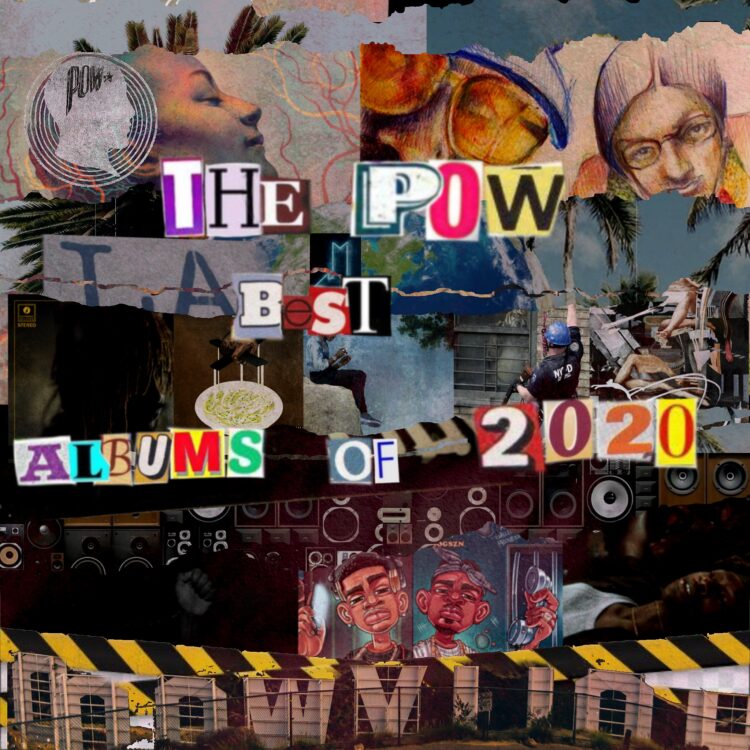
Art by Nathan Moya-Mendez
POW is a website without ads. We don’t do sponcon, we don’t do clickbait, we don’t have any corporate overlords. This list that you’re about to read is a labor of love, inasmuch as anything can be a labor of love in late capitalism.
Even labors of love come at the significant cost of time. This is the result of hundreds of hours of labor. Three editors and dozens of contributors attempting to capture the spirit of the old weird Internet. Should you value what we do, please consider donating to the Patreon. It is the only way we can continue to survive.
50. Pop Smoke – Meet the Woo 2 [Republic Records]
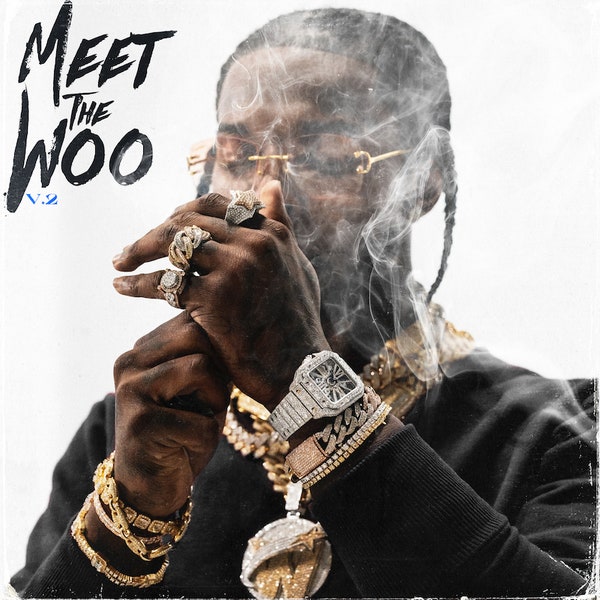
If Pop Smoke was inescapable from New York car speakers in 2019, then he was inescapable, period, in 2020. Hits from the first Meet the Woo tape like “Welcome to the Party” and “Dior” still went as strong as ever, while July’s posthumous Shoot for the Stars Aim for the Moon broadened his appeal with big-name features and overtures to the mainstream. Bridging the two, Meet the Woo Vol. 2 didn’t have blockbusters on the level of “Party” — with respect to “Christopher Walking” — nor new artistic directions. Instead, it’s a simple reminder that what made Pop Smoke so great is just what he did best. True to drill traditions established in Chicago and then the UK, the threat of violence is ever-present, but so is an organizing spirit of reckless joy. Getting lit as a revolutionary act. (See: The reclamation of “Dior” as protest music, everywhere but of course especially New York.)
British producer 808Melo returned from Vol. 1 with another half-dozen quintessential Pop Smoke beats, something that Shoot for the Stars reminded us not to take for granted. A topline of frigid, uncaring synths might catch your attention, but bass dominant enough to soundtrack parties thrown in deep-sea trenches brought the energy. Some aspiring Brooklyn drill rappers have gravitated towards Pop’s style and his type beats, but still nobody sounds like he did. (Not with that voice, which sounds like if key bumps of gravel could give you superpowers.) His music is a release, to be played at max volume and yelled louder. I felt chills when I heard “Invincible,” the strings-laden intro to Vol. 2, for the first time. When the entire room is shouting the hook’s opening line, you really believe it, too. RIP Pop Smoke. — KEVIN YEUNG
49. Yaeji – What We Drew [XL Recordings]
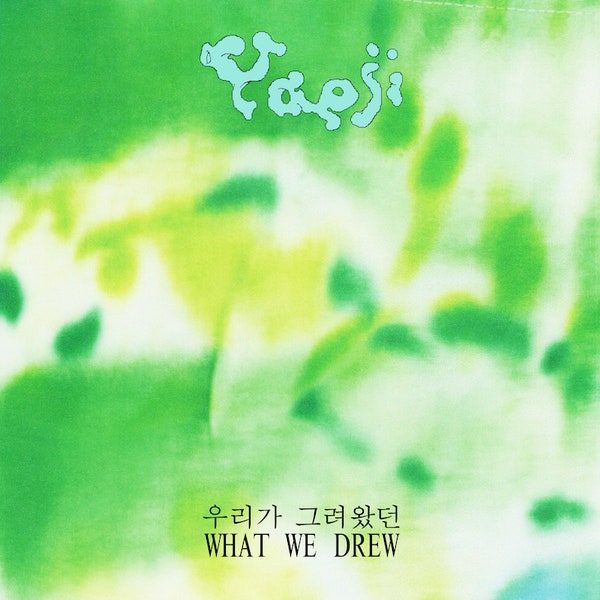
There’s really no better summation of Yaeji’s music than the tagline on her Bandcamp page: “I’m into it all.” The Brooklyn DJ/producer’s first album for XL Recordings is the product of someone with open ears, arms, and brains; the squeeze of a creative mind soaking up all manner of modern and classic club music. Audible throughout What We Drew are influences of electro, trap, garage, experimental electronica, and future R&B, but it’s what Yaeji adds of herself to this broth that gives the album its heady, hearty tang.
Singing and rapping in English and Korean, the young artist works through her conflicted emotions: at all the attention her music has brought her and how something as simple as cooking and knocking items off a to-do list can feel monumental when you haven’t quite recovered from the night before. Keeping Yaeji going on this album is the support of her friends, with tart rapper Nappy Nina, Japanese producer YonYon, and UK artist Victoria Sin all adding their own unique ingredients to this delectable communal meal. — ROBERT HAM
48. Bad Bunny – YHLQMDLG [Rimas Entertainment LLC]
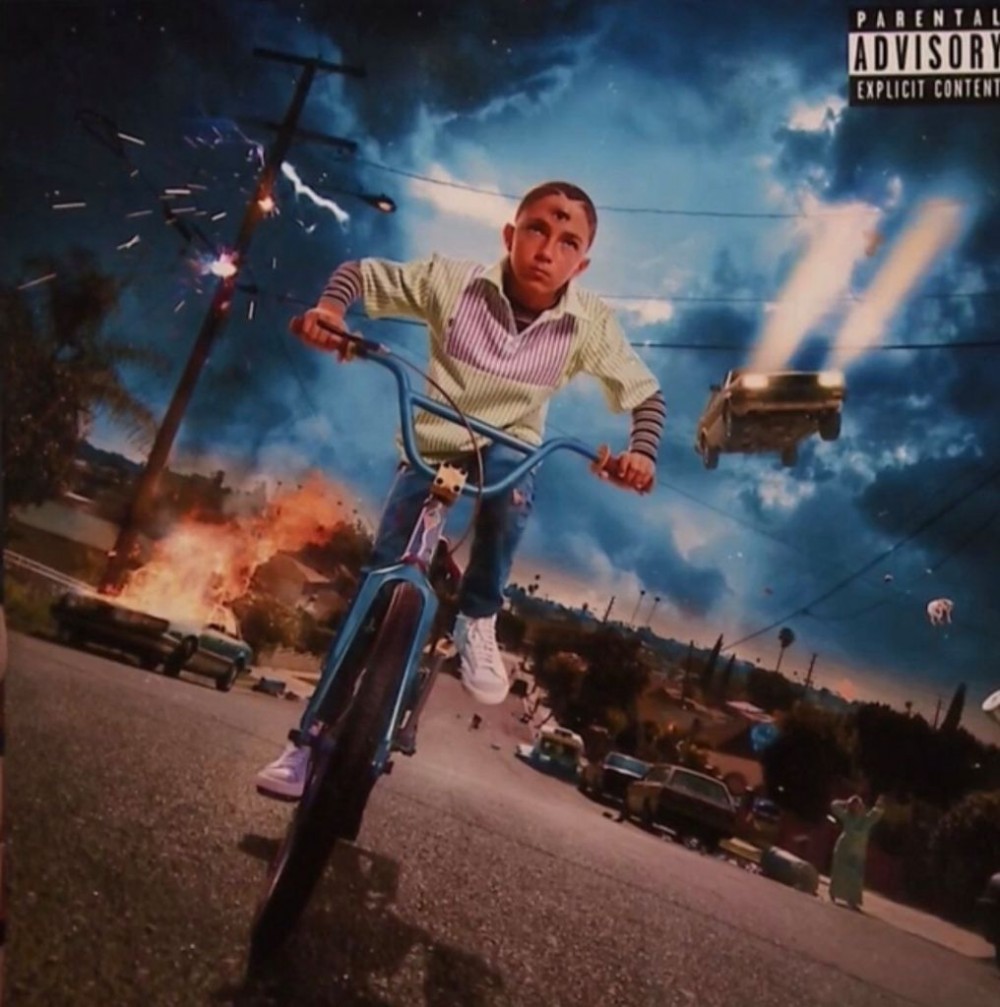
According to the Chinese Zodiac, 2020 was the year of the Rat, meaning it was off for the first time in over 700 years. More than chaos and misery, 2020 belonged to Bad Bunny. He began the year with an appearance at the Super Bowl Halftime Show, followed shortly thereafter by the release of this incredible album. He released another album in May. He had a role in Narcos: Mexico interrupted by the plague.
In July, he became the first man other than Hugh Hefner to ever appear on the cover of Playboy. Joe Biden used one of his hits in a campaign ad. In late September, in what can only be described as a Bane-like move, Bad Bunny briefly held the city of New York hostage with a roving concert delivered from the back of a flatbed truck. Just after Thanksgiving, he released another proper studio album, somehow described as “his most ambitious” effort. He was announced as Spotify’s highest streaming artist of the year, with this album as its highest streaming album.
Over the course of the following essay, I will argue- (this blurb has been condensed from the 7,000 words Abe submitted in his impassioned attempt to convince us Bad Bunny deserved to crack our top 10) — ABE BEAME
47. Pink Siifu – NEGRO [Field-Left]
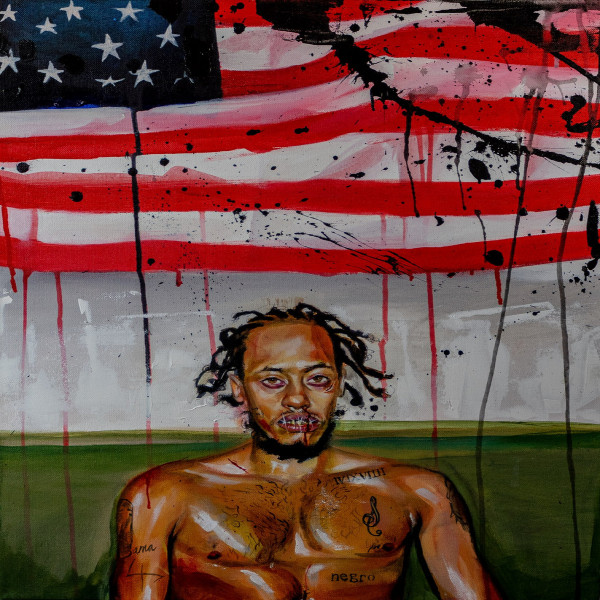
As America’s War on Black People reached unprecedented levels of visibility, thanks to camera phones and Twitter and the majority of white people’s addiction to Black trauma, we Black folk have a good goddamn reason to be angry in 2020. An inflammatory assortment of hardcore punk, free jazz, and soulful, downtempo hip-hop music, NEGRO — right down to its all-caps title — takes un-distilled Black rage and throws it in the face of whomever’s listening. It’s a reflection of the danger African-American people are forced to be used to when we step out of our doors; under the threat of pigs slaughtering us or the white man trying to take our shit.
Our experience is augmented by these 40 minutes of impressionistic (and sometimes downright abstract) pieces, not just of righteous Black anger and living under the weight of potential tragedy and white supremacy most places we turn, but of Black love (“blackest LOVE, like paint on the wall”), of loyalty (“homicide/genocide/ill die”), and the need for representation (“we need mo color.”).
NEGRO is mostly made up of brief punk songs that feel like getting punched in the face (possibly after microdosing), openly challenging the institution of police. Songs like “DEADMEAT,” “steal from the ENEMY,” and rippers which get the album started: “SMD” and “FK.” There are mantras like “you gotta shoot a pig/before they shoot you” and memorials to Chris Dorner, a former officer who claimed infamy for his manhunt of LAPD cops after the department fired him for writing in a report his training officer used excessive force on citizens.
From the primal scream of THEY TRYNA KILL MY NIGGAS to a humorous conversation snippet about how “niggas is out here fuckin’ like white boys,” NEGRO is a violent rebuke of respectibility politics, an ideological defense of Black aggression. In a social climate where it’s trendy and profitable to be polite and performatively woke, it’s a breath of fresh air to take in music so provocative and volatile. — DOUGLAS MARTIN
46. Hook – I Love You 2, Hook [GC]
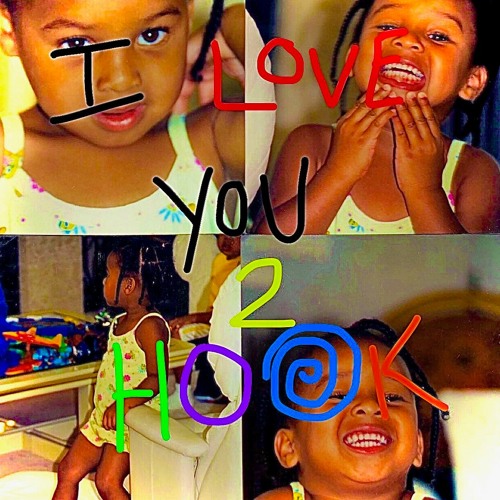
When HOOK is deep in her bag, there isn’t room to breathe. It’s like the color spill of a roaring sunset, reds and pinks and oranges pouring into each other and squeezing out the negative space. Maybe because that’s what hubris and heartbreak feel like: losing yourself in your own world. Ecstasy and angst blend to form new tones. HOOK’s voice bleeds across every beat like watercolor.
In her two-year rap career, the Inland Empire rapper has already painted across the spectrum. On Crashed My Car, her first album of 2020, she barreled over the bar lines of producer Nedarb’s furious instrumentals. The thing could turn asphalt to goo. Then came Pretty Bitty: The Mixtape, a delirious collection of freestyles over Obama-era classics.
But her best album of the year was I Love You 2, Hook, a muffled sludge of a record about the emotional splatter of breakups. Across these songs, produced by texture-minded innovators like Tony Seltzer, MexikoDro and Evilgiane, HOOK pulls thoughts from the wreckage to form unfiltered mantras. On “Gnat,” a buzzing swarm pans across the mix as she yells, “I can’t ever fuck with no gnat!” If anything, you’ll leave this record with several dozen new ways of talking shit about your ex.
Beyond that, though, HOOK understands how our minds work in the abyss. Language gets sharper, simpler. Thoughts spill into each other like layered vocal tracks. Across I Love You 2, Hook, HOOK captures the drift, the anger, the missed calls, the push and pull, and, by the album’s close, the self-realization that you’re still the shit. — MANO SUNDARESAN
45. Benny the Butcher – Burden of Proof [Griselda Records / EMPIRE]
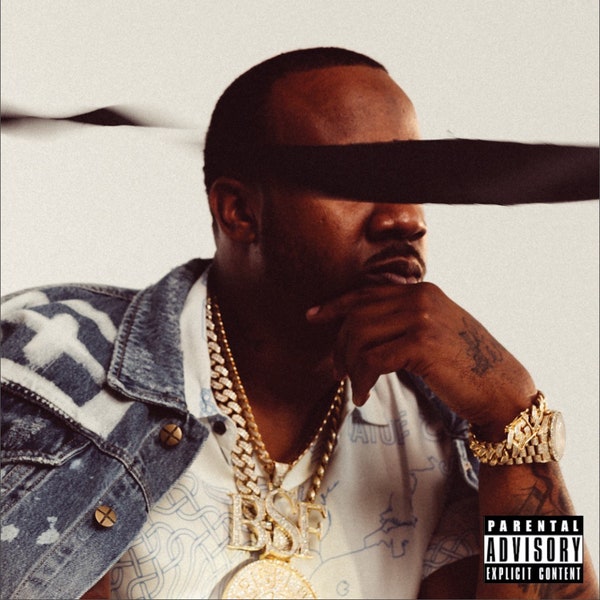
Griselda’s 2020 level up wasn’t just statistical, it also played an essential role in accomplishing something seemingly impossible over recent years: It’s helped close hip-hop’s generational gap with a combination of production and storytelling that conjures up memories of a time when elder Millennials and Gen Xers fell in love with the genre.
With his sophomore album, Burden Of Proof, Benny The Butcher hit that nebulous sweet spot where hip-hop touches cinema. Comparing it to another album feels forced — telling people that it’s the audio manifestation of a season of Fargo directed by Quentin Tarantino, oddly feels right.
Hit-Boy had a monster year in his own right, laying the tracks for Big Sean’s Detroit 2 and Nas’ gout album. Burden Of Proof was his top offering, and one tailor made for Benny’s mid-tempo comfort zone.
With 2020 being the year of the 25-plus song deluxe album, Burden Of Proof was was refreshingly filler free, from its 40 minute running time to the features (Lil Wayne, Big Sean, Freddie Gibbs, Rick Ross, Queen Naija, Conway The Machine and Westside Gunn), none of which felt like an A&R ploy to pad their own Christmas bonus.
In his own words from the album’s final song “Legend,” “They ain’t know me then bet they checkin’ now. The best player gettin’ drafted in the 7th round.” Benny The Butcher is the embodiment of perseverance and at 36-years-old, the success of Burden Of Proof is even sweeter as his journey is revealed. Classy, street, introspective, confident with just enough insecurity to remind the listener he’s human. — JAKE ROHN
44. Lila Iké – The ExPerience [RCA Records]
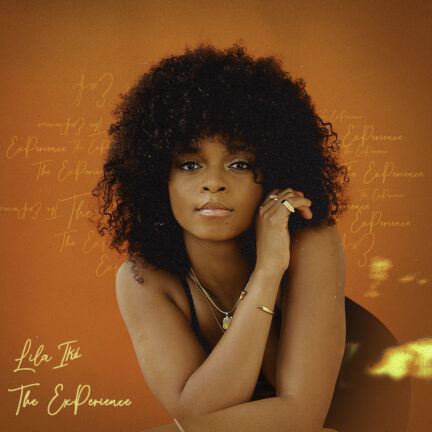
The spring of 2020 was a landmark season for Jamaican songstress Lila Iké. Kickstarted by her April signing with RCA Records, Iké entered the big leagues this year with ease, courage, and a seven-track introduction called The ExPerience. Released in May, her debut EP explores the universal themes of young womanhood through deeply personal tales of love, loss, spirituality, and self-realization. Assisted by some of the island’s top producers (Phillip “Winta” James) as well as its hottest up-and-comers (Iotosh, JLL, Ziah), Iké bares her soul and breaks through the seams of traditional reggae music. Touting pop and R&B sensibilities on tracks like the IzyBeats-produced “I Spy” and hip hop influence on “Where I’m Coming From,” The ExPerience journeys beyond and stays devoted to its country of origin. Jamaican riddims take center stage on the lovelorn “Second Chance” (Aswad’s ’81 “Love Fire”) and the lovestruck “Stars Align” (Protoje’s ’18 “Bout Noon”), while the anthemic “Thy Will” enlists a sample of The Tamlins’ ’80 Sly & Robbie-produced “Baltimore.”
Pointing to predecessors and collaborating with contemporaries, the Manchester-bred, Kingston-based artist proves that no woman is an island, no matter how singular her sound. As one of three leading ladies on Protoje’s In.Digg.Nation label, alongside singers Sevana and Jaz Elise, Iké is a key voice in Jamaica’s emerging generation of artists. On The ExPerience, we come to know her story, her values, her pain. A story unique to a twenty-six year old woman, raised in a small Caribbean country, on the music of Garnett Silk and the word of God. And yet, when stripped of its nuances, one that relates to many outside of its borders. Last spring, Lila Iké welcomed a new season, and through The ExPerience, she shared what it feels like to be in bloom. — PALEY MARTIN
43. Future – High Off Life [Epic Records / Freebandz]
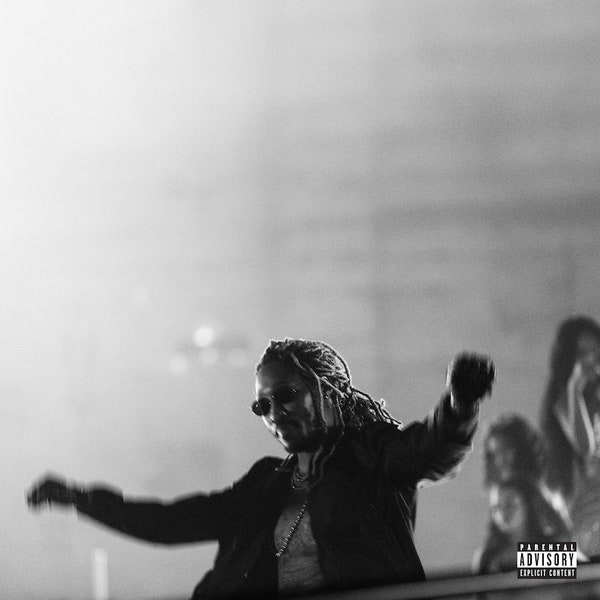
There’s something about Future’s music – the inescapable rat-tat-tat 1-2-3 of his triplets – that sounds like spinning wheels to me. Maybe it’s the way they tumble over and over and over and over, the end of the three auguring inevitably the arrival of the one. 1-2-3, 1-2-3, covered in money I’m covered in money I’m –
It doesn’t feel like this motion ever stops. It could be his sheer prolificacy. In the last decade he has released twenty mixtapes, nine studio albums, two EPs, and a soundtrack, each aside from the EPs averaging about seventeen songs. He has released 113 singles including his features. They’re staggering figures. Year after year after year after year, he just keeps spitting. “Rotation” is not a song, it’s a worldview.
But something has to provide the power to make the wheel spin. Since his breakup with Ciara in 2014, it’s been a fiery furnace of self-loathing, perks, and codeine. He’d produced great work – and a lot of it – before. But he made orders of magnitudes more and better after. Maybe we should feel guilty. Future’s life – its shambles – provides the fire, and we get “HiTek Tek” and “Trillionaire.” It feels unfair.
Then again, a wheel that doesn’t spin is its own kind of tragedy. A Future who does not produce at a clip that shames most artists doesn’t seem like Future at all. All wasted potential energy.
So perhaps we should just stare up at the wheel, watch it roll over and over, and admire its toil and audacity. It is the nature of the wheel to keep rolling. Who are we to stop it? — JORDAN RYAN PEDERSEN
42. J Hus – Big Conspiracy [Black Butter Limited]
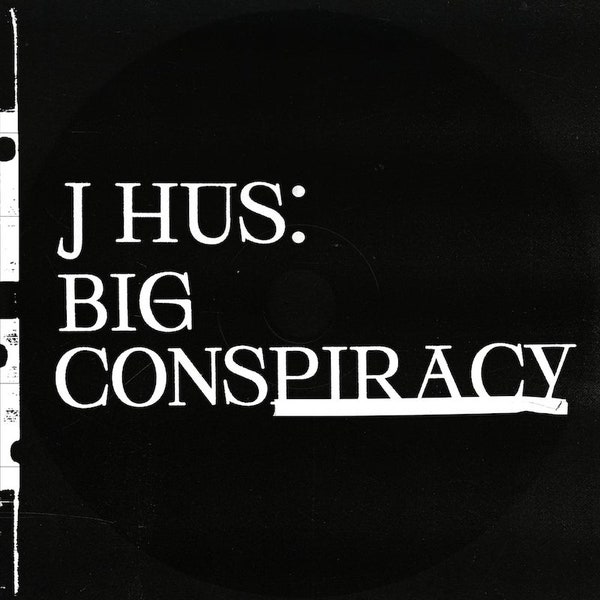
J Hus burst onto the music scene with his 2017 debut Common Sense, which deftly synthesized a kaleidoscope of genres—specifically reggae, dancehall, grime, hip-hop and afrobeats—into something truly unique. Common Sense was breezy and carefree, detailing J Hus’s love of money, cars, and (lots and lots of) sex. That all changed in 2018 when J Hus was made an example of and sent to prison for nearly a year at the height of what conservatives in the UK referred to as a “knife crisis.”
Named for the British government’s attempt to pin him as the posterboy for violence around the nation,Big Conspiracy sees a more mature J Hus emerge, both in genre and in subject matter. Songs like “Helicopter” see him tackling complex topics like colonialism, police brutality, incarceration, religion and the UK’s history of racism, while deep cuts like “Must Be” see him expanding his Herculean grasp of every musical genre to jazz-rap and R&B. His experience as the son of African immigrants has always been an undercurrent, but it’s especially pronounced here as he grapples with survival in a city he doesn’t belong in.
Don’t think for a second that he’s lost his touch for making sensual songs that beg to be played loudly on the beach. “Cucumber” is exactly what you think it is about, while the Burna Boy collab “Play Play” has him comparing his sexual prowess to various weapons in ways you didn’t even think possible; J Hus could definitely rap about the perspective of a gun in reverse, but there’s absolutely no way Nas could compare his dick to 15 different firearms.
In the end, Big Conspiracy is a marked improvement on his debut, with tighter production, sharper writing and an evolution of the genre-crossing style that put him on the map. It feels like a victory lap and a middle finger to all who doubted him, and a reclamation of the UK rap throne. He sums it up best: “The fakers form an alliance, but the real ones always triumph.” — MARCO KANE
41. Run The Jewels – RTJ4 [Jewel Runners]

Laws of gravity suggest that diminishing returns should have beset Run the Jewels long ago. Killer Mike and El-P, both 45 years old, have been genre mainstays since the 1990s. The first RTJ album conjured an unmistakable alchemy and delivered blistering indictments of the ruling class. But vanishingly few artists continue to sharpen their vision decades into their career. How many RTJ albums can be vital, really?
The answer, we now know, is at least four. RTJ4 bottles all of the duo’s strengths, harmoniously balancing both their grinning tag-team goofiness and seething, rage-against-the-machine fury. El is all wiry, cartoonish energy; Mike is haunted by his late mother’s ghost and incensed at an inequitable, intractable system. Their interplay is predictably nimble, equally convincing while they urinate on the queen (“ooh la la”) as when they methodically rebuke our education system and organized religion (“walking in the snow”).
RTJ4 dropped June 3rd, mere days after nationwide protests erupted over the police murder of George Floyd. Music critics have spent 2020 clumsily stamping any mildly gloomy melody as a Sign Of Our Times, but RTJ4 *actually* captured the moment. And of course it did; RTJ have consistently railed against police brutality and the entrenched institutional forces that smother any attempts at change. RTJ4 is essential because it dares to mix anarchy and perspective, recognizing both the urgency of addressing today’s systemic racism and its long, stubborn history.
Midway through RTJ4, Mike gasps “I can’t breathe”, evoking the final words of Eric Garner, killed by police in 2014 – a harrowing moment once it registers that these were Floyd’s last words, too. These parallels are less prophecy than a grim reminder that history will repeat itself until we stop politely pleading for change and start demanding it. But if you’ve been listening to Run the Jewels all along, you already knew that. – ALEX SWHEAR
40. 21 Savage & Metro Boomin’ – Savage Mode II [Epic Records]
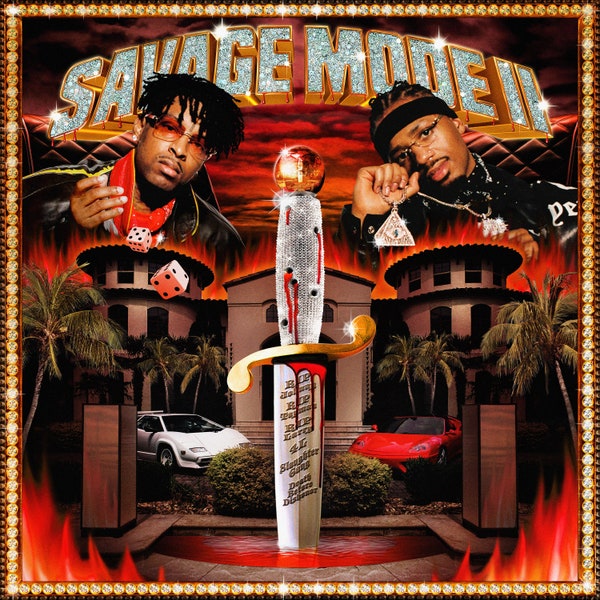
Savage Mode 2 is an album imbued with the confidence of two stars that are completely secure in their spots within rap’s larger ecosystem. How else can one explain the nerve it takes to ask an actor (with a capital “A”) as esteemed as Morgan Freeman to provide narration that not only opens and closes the album, but also expounds on the finer differences between snitches and rats? You don’t come up with an idea like that without some chutzpah – and a bigger budget.
The same chutzpah also enables 21 Savage and Metro Boomin to display their deepened chemistry and trust throughout an album that expands on its 2016 predecessor with increased risk taking that works more often than not. From 50 Cent interpolations to classic West Coast bass, nothing’s off limits for Metro Boomin, and 21 Savage does his best to meet the challenge with varying degrees of success. It likely helps that both artists spent the intervening years releasing projects with broader and brighter songs than the ones on Savage Mode; but the best moments still lean on the gothic Trap that formed the basis of this album’s predecessor.
Time will tell if Savage Mode 2 fits on the list of great (and arguably classic) rap “sophomore” albums like ATLiens, Hell On Earth, It Was Written and Labcabincalifornia. Morgan Freeman’s baritone certainly fills this listener with enough confidence to state that Savage Mode 2 fits comfortably on that list. — MOBB DEEN
39. Jessie Ware – What’s Your Pleasure? [Virgin EMI Records]

After a disappointing reception to her autobiographical album Glasshouse in 2017, Jessie Ware turned to more universal subject matter. What’s Your Pleasure? is 12 songs about dancing, fucking, and the anticipation of both. This is the bassline album of the year, a giddy mix of disco and house inspired by the sound of pre-AIDS New York nightlife, complete with a Warhol-esque Polaroid album cover. The bass patterns on “The Kill” and “In Your Eyes” sprint like they were programmed by Moroder himself. “Ooh La La” has strutting bass, taunting lyrics, purple synth hits, and guitar shrieks. It sounds like a lost Prince song circa 1999, and that’s the strongest recommendation I can give.
The Paradise Garage cosplay is a great fit for Ware. She’s most famous as a ballad singer, but here even the slower songs groove all the way through. Her voice sounds amazing after a decade-long career, like the ecstatic melody of “In Your Eyes” that pushes and pulls against the drum machine and the backing vocals. Ware sings like a worthy heir to Donna Summer as she soundtracks the ideal night out, from elbowing onto the dance floor to calling a ride home with a stranger. Neo-disco dance music was an ironically popular trend this year among pop musicians including Dua Lipa, Lady Gaga, Roisin Murphy, and even The Weeknd, who surely wouldn’t be booked for the 2021 Super Bowl if he hadn’t added more and more neon to his sound since House of Balloons. But all their records aren’t as fun as What’s Your Pleasure?. — JACK RIEDY
38. 42 Dugg – Young & Turnt 2 [4PF / CMG]
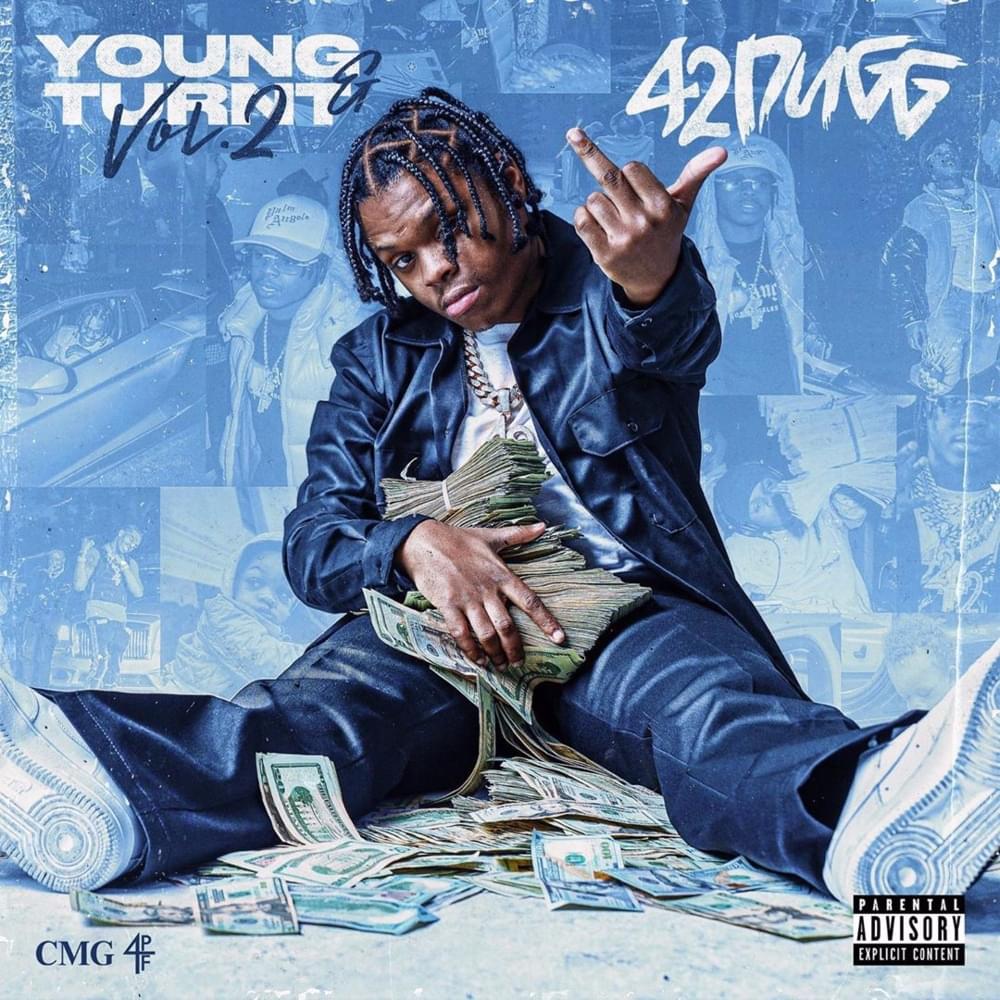
There’s Picasso’s blue, Tarantino’s….uhh, everything that makes a movie “Tarantinoesque,” “Metro Boomin want some more,” and as of this year, 42 Dugg’s signature whistle. The distinctively piercing whistle even beckons us into POW’s 2020 song of the year, “We Paid,” one of Dugg’s two astounding features that topped charts with Lil Baby this year. That whistle, along with Dugg’s blend of heartfelt confessionals and “turn it up” ratchet raps showcased on Yung & Turnt 2 leveled him into the upper tier of popular street rappers this year. It’s no wonder there was a label bidding war for his services.
Dugg strikes a tough balance, staying true to his midwestern roots with videos chronicling Detroit street history and a selection of beats that mostly embody the funky spirit of the Motor City; but he’s superseded the bubble in the city, dropping tentacles in Atlanta and Memphis with his now-joint label partners Lil Baby and Yo Gotti. His soulful twang permeates every song on Yung & Turnt 2, from his shoutouts to Kentucky and the Nash to the vocal inflections as he raps about missing his guys and the weight of success. The album runs the full gamut of emotions, with top-down reflections on secret grudges, fallouts with close friends over some grams, and dark clouds that hang over souls — to more playful tracks like “Habit” wherein he admits to having a carnal addiction to raw sex.
It’s been easy to call Detroit the next Atlanta with the quality of rap coming out of the city, but if it’s going to reach mythical status where young rappers start migrating there for a shot, it’s going to take guys like Dugg repping the city to let the world know about the neo-Renaissance in progress. — HARLEY GEFFNER
37. Shabaka & The Ancestors – We Are Sent Here by History [Impulse! Records]
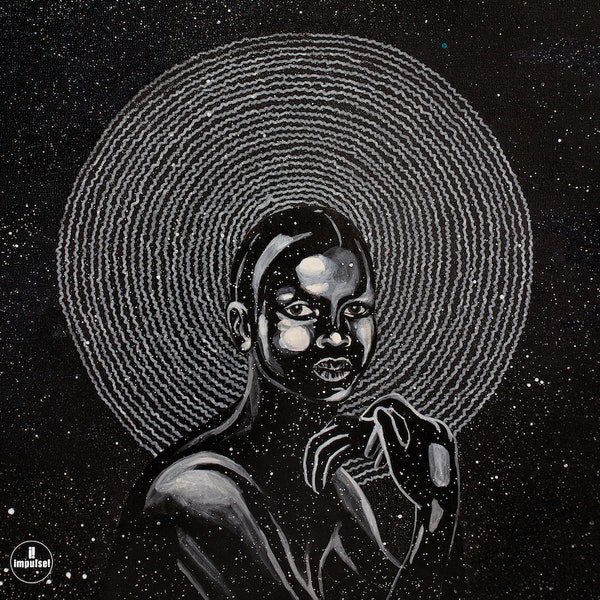
In 2016 British saxophonist Shabaka Hutchings traveled to South Africa, where he met the musicians with whom he went on to form Shabaka and the Ancestors. We Are Sent Here by History is the group’s second album, and it—alongside his work in the bands Sons of Kemet and The Comet is Coming—further demonstrates why Hutchings is at the forefront of creating the sound of the Black diaspora in the 21st century. Featuring vocalist Siyabonga Mthembu (who sings in English, Swahili, and Xhosa), alto saxophonist Mthunzi Mvubu, bassist Ariel Zomonsky, percussionist Gontse Makhene, and drummer Tumi Mogorosi, the album pulls together multiple strands of Black music and infuses them with anti-colonial and anti-racist politics.
We Are Sent Here by History addresses the dire state of the planet, the plight of its most marginalized peoples, and the continuing aftereffects of slavery and colonialism. “They Who Must Die” and “You’ve Been Called” address the West’s oppression and its failure to deliver on its promises of prosperity and equality. The hard-charging rhythm section and Mthembu’s forceful call to burn the names, archives, records, and bills on “They Who Must Die” suggest the inevitable return of the cultures erased by colonialism.
As with everything Hutchings touches, We Are Sent Here by History is funky, urgent, and unwavering in its expression of Black music’s myriad modes. One hears influences of West African and Afro-Caribbean percussion, dub, and of course jazz. Call and response and group chants give the music a communal feeling. In fact, community might be one of the album’s main themes: an international community of musicians finding common cause to speak on behalf of those whose lives were torn apart by white supremacy. While the Ancestors’ music goes down easy, their message is not pleasant, but it is necessary.
— CHRIS ROBINSON
36. Theo Parrish – Wuddaji [Sound Signature]
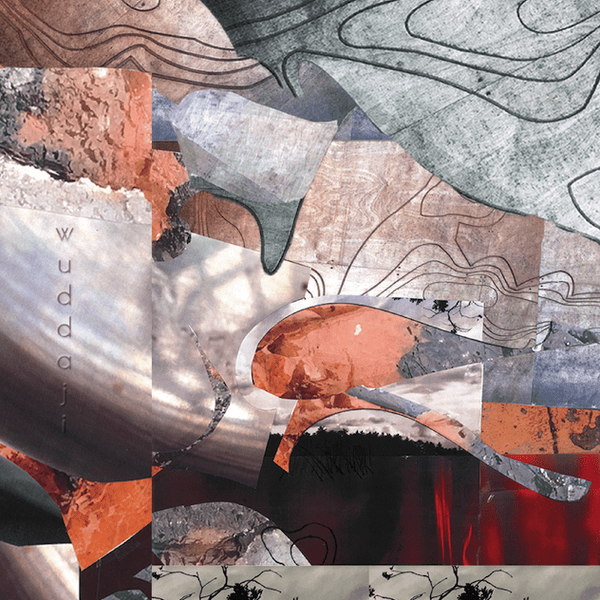
Detroit techno and Chicago house are the essential yin and yang of dance music, as intrinsic to the form and its ever-mutating DNA as carbon derived from stars. Almost 40 years later, it’s impossible to make a dance record that isn’t informed by the outlines, contours and ideas contained in these foundational polarities. But if Detroit techno was the sound of a cavernous warehouse gathering in a post-industrial dystopia and Chicago house the OST for an illicit loft party behind your aunt’s beauty salon, few were better placed to map these worlds together than Chicago native turned Detroit transplant Theo Parrish. Alongside Rick Wilhite, Marcellus Pittman and Kenny Dixon Jr. (aka Moodymann), Parrish spliced disco kicks and soul samples with the menacing pulse of techno, forever opening up the textural and emotional palette of dance music in ways that still reverberate today. The records were funky but unstable and crackled with tension.
Decades later, Wuddaji showcases Parrish as a vibrant composer and experimentalist. He still makes reliably heavy remixes but his albums tend to use the tools of club music in ways that are avowedly jazz – making producers like Daedalus, Prefuse 73 and FlyLo just some of his stylistic step-children. Even his most jarring ideas insist upon themselves until you share his cadence, aided by a lo-fi warmth that brings the music close. “Hambone Cappacino” assembles Fender Rhodes warbles into an off-kilter two-step that would make Captain Beefheart proud. “Radar Detector” has the hurdy-gurdy quality of a ballpark Hammond organ on salvia. “Hennyweed Buckdance” rides out over a slinky West African groove and “Angry Purple Birds” simmers with low-end menace and triangles.
Parrish remains a vital and singular force – making provocative body music that enters your personal space, stands a little too close and then refuses to leave. — JOEL BISWAS
35. Dungen – Live [Mexican Summer]
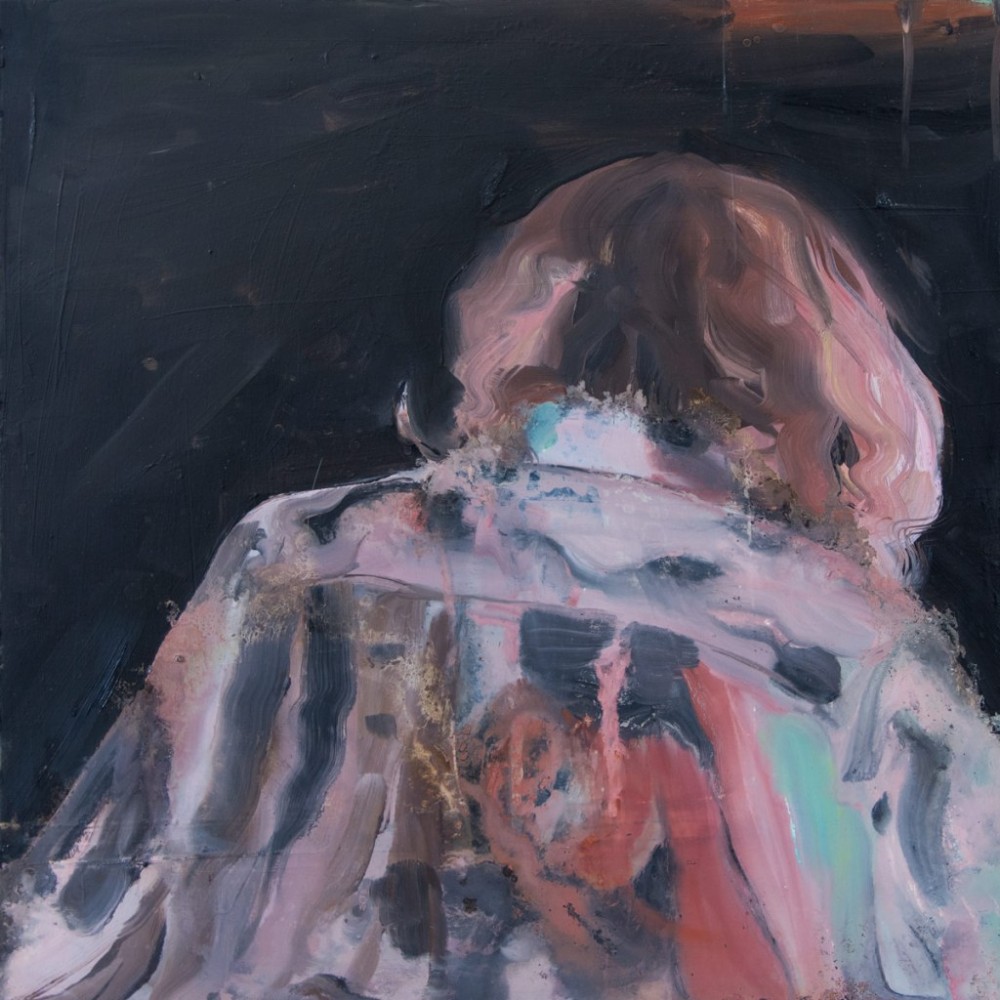
Before Grateful Dead cover bands could headline the Brooklyn Bowl, Swedish outfit Dungen breathed unexpected life into blissed-out screamadelica with their taught, tuneful Ta det Lugnt. Sparkling with inventive arrangements, lush 70’s FM harmonies and monster breaks, the music revolved around the widescreen melodic ideas of Gustav Ejstes – singer, pianist, flautist and turntablist nut. A love-in ensued; Kevin Parker was a notable acolyte. But as Tame Impala gradually swapped fuzz pedals for samplers on their way to become this generation’s Coldplay, Dungen doubled-down on their most lysergic tendencies with the 2015’s virtuosic Allas Sak – an almost-live epic haunted by the ghosts of Pink Floyd, Santana and Vanilla Fudge — but one possessing a grandeur all its own.
Since then they’ve levitated just above the fray – witchy, reclusive, omnipresent. Their 2016 soundtrack for the 1922 silent firm “Haxan/The Witch” presented instrumental ideas like vapor trails or snatched recollections of an acid trip and “Dungen Live” does something similar. It was recorded in Sweden in 2015 after the release of “Allas Sak” but song, sequence and vocals are wilfully obscured in favor of sequenced passages of the band’s swirling and telepathic interplay, an alpha-numeric catalogue of vibes ranging from ego death to post-orgasmic bliss. With Ejstes on flute and piano, Jonas Kullhammar on tenor sax, the ecstatic guitar freak-outs of Reine Fiske and rippling low end of bassist Mattias Gustavsson and drummer Johan Holmegard, this is Dungen as super-group in media res, displaying near total mastery over grooves that hit like celestial fragments or cavernous deep-space transmissions.
Dungen are no less than 2020’s platonic ideal of a psychedelic band – defiantly unstuck in time even before the world ended, following their ever-expanding circle into the mystic. — JOEL BISWAS
34. Caribou – Suddenly [City Slang]

Electronic sounds are, of course, created by humans, and so are the devices used to create them. This is true even when the author doesn’t want us to know it is – see Kraftwerk, Daft Punk. It can often make the finished product something of a Matryoshka ghost in the machine.
That push-pull between the human and the mechanical is right out front on Suddenly, Dan Snaith’s 5th album as Caribou – and 10th overall. Under Snaith’s fingers, the synthesizer is an immediate target for manipulation. The aquatic pad on opener “Sister” isn’t around for 30 seconds before Snaith starts to tweak and mutate it. “This is not a sound,” he seems to be saying. “This is me.” I’m reminded of Dilla turning off the quantize mode on his MPC.
Elsewhere, he’s working from the other end of the equation, taking other peoples’ voices and processing them, distorting them, chopping them up. Computerizing them, in other words. The middle is where Snaith seems most comfortable anyway – somewhere in the center of a tetrad of UK garage, house, electropop, and the 90s hip-hop he grew up listening to.
Snaith wrote “New Jade” for his sister-in-law going through what he called an “explosive divorce.” Words as direct as these – “Now you’re gone for good,” “In time you’ll see how much better off you’ll be” – might be tough to swallow on their own. But he buries them amidst a clippy vocal sample punctuated by chiming bell synthesizers.
Caribou’s music navigates the endpoints that comprise it – the human and the mechanical, the blunt and the uplifting. It is a dialectic that soothes but not does not distort – Snaith cannot help but create beautiful music, but he’s not interested in escapism. Call it harmony knit from struggle. — JORDAN RYAN PEDERSEN
33. Against All Logic – 2017 – 2019 [Other People]
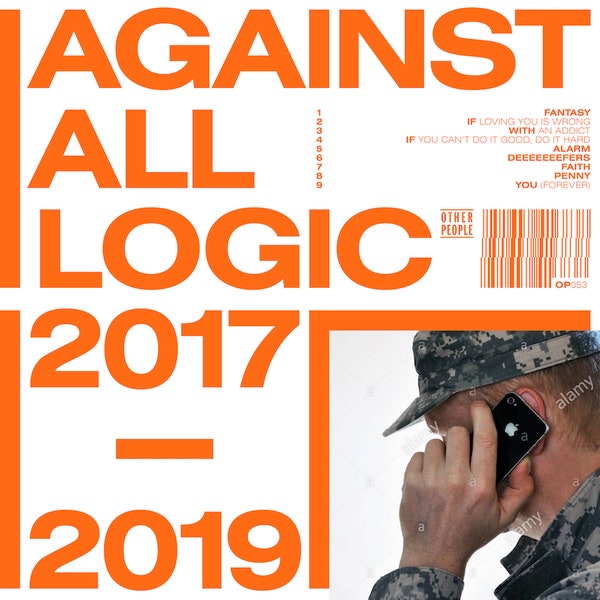
When Nicolas Jaar first donned the Against All Logic moniker and flung 2012-2017 into the ether two years ago, it was the ultimate musical smirk. It was the man who made a career out of erudite self-examinations, letting his genius translate itself into a more familiar, head-bobbing language: all pulsing basslines and swirling vocal chops. It was a momentary release of the reins, and an instant classic.
His second entry into the A.A.L canon is an equally elite bait-and-switch, kicking off the affair with a hollowed-out Beyoncé flip before folding in on itself. 2017-2019 is punishing and intrepid. If 2012-2017 was an embrace, this feels like a rejection, a twisting of traditional deep house and techno tropes into something frustrated and military. It isn’t until the album’s closer, “You (Forever)”, that Jaar offers an olive branch, a bridge back towards familiar ground.
But the album also starts solidifying what was already a fascinating question: what it means for an artist entrenched as a generational talent to continue building out a discography so self-referential. It’s been a long time now since Jaar split his artistic career into multiple branches, progressing on different contrasting paths — increasingly subtle and esoteric ambient under his primary name, in conversation with more lush instrumentalism under the Darkside alter ego with Dave Harrington.
Today, we know Nicolas Jaar makes music like this because it’s under Against All Logic, and 2017-2019 sounds like this precisely because it’s not Cenizas. It’s all dangerously close to a house of cards and too self-obsessed by half, but that’s equally the allure: watching Jaar ricochet between aliases and side projects, seeking self-contradiction to flesh out the scope of his genius. In that equation, it feels like Against All Logic is increasingly held equivalent to Jaar’s purest conception of freedom, and even when that vision is this explicit and pounding, it is exhilarating. — SUN-UI YUM
32. Brigid Dawson and the Mothers Network – Ballet of Apes [Castle Face]
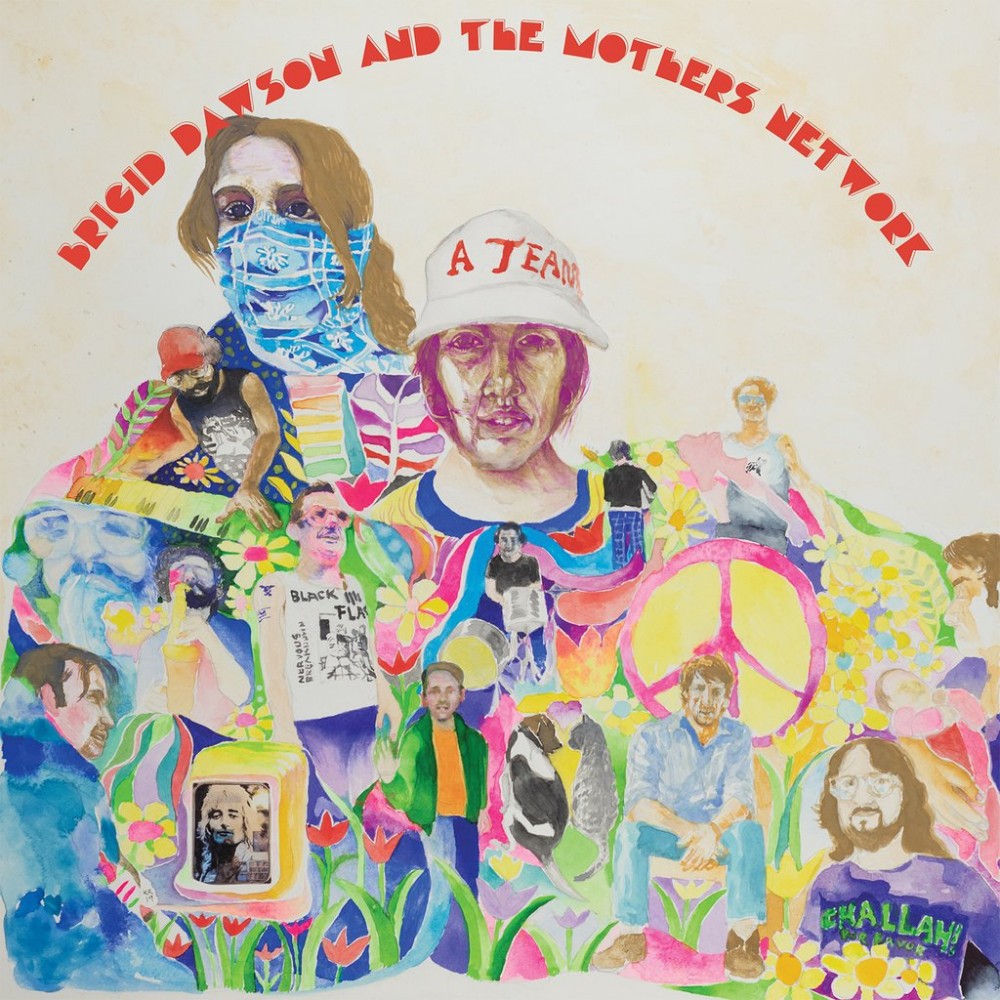
Before the OG lineup of garage-punk titans Thee Oh Sees went their separate ways and John Dwyer pivoted to prog, Brigid Dawson, on keys and backup vocals, was the band’s secret weapon. Though Oh Sees and all its other nomenclature permutations are as popular as ever, I’ve always felt something was missing when Dawson left the band. Nearly seven years on from that (and three from Dawson and Dwyer’s stellar OCS album Memory of a Cut off Head), she at last released her solo debut, rife with loss and a glimmer of optimism and the need for a new beginning in society.
The imagination of Dawson and her worldwide, ahem, network of collaborators — the album was recorded in San Francisco, New York, and Melbourne — spreads through the spiritual influence of of flowering folk music (“When My Day of the Crone Comes”) and balladry turned up by a stirring guitar solo (“Heartbreak Jazz”). The original version of “The Fool” (which showed up in orchestral form for OCS) is blooming Northern soul. The title track, “Ballet of Apes,” is a Can-inspired, six-minute crescendo followed by a tempest climax; a song about the primal dance of masculinity.
Closing track “Trixxx” opens up sounding like an exhausted New Year’s Eve party before Dawson’s soothing, nearly ethereal voice sends us off feeling comforted by the beauty and emotion of the epic journey of this album and all its parables of loss and hope. — DOUGLAS MARTIN
31. Ras G – Raw Fruit Vol. 5 & 6 [Ghetto Sci-Fi]
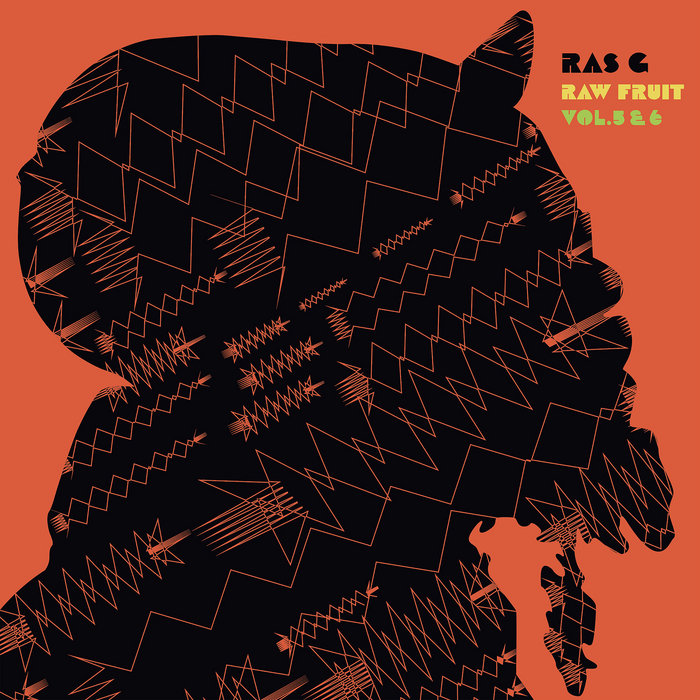
The L.A. beat scene didn’t go global overnight. For years, genre-fracturing amalgams of hip-hop, electronic, jazz, and more bumped in nearly empty rooms, echoing from a boombox in a grimy East Hollywood alley. Ras G was in those rooms, rolling blunts in that alley. When beat scene events like Low End Theory became shoulder-to-shoulder packed, you could still spot the Leimert Park producer. A thick cloud of smoke floated above his wrapped dreads and Polo jacket, the stones and gilded rings on his fingers glinting when light found them. On stage, armed with his SP-404, he waged war against all soundmen and man-made speakers. The red wasn’t a warning but a way of life. You felt a Ras G set as much as you heard it. In those sets and on records like Brotha From Anotha Planet, he brought Afro-futurism to the beat scene, reaching back to draw intersecting lines between decades of Black music while charting a new astral course. Rooted in rap, reggae/dub, and cosmic jazz, his beats were from this planet and not. Unfortunately, on July 29, 2019, Ras G left this planet at just 40 years old.
Raw Fruit Vol. 5 & 6 is the first posthumous Ras G record. Fortunately, it wasn’t Frankesteined together as a post-mortem cash grab. Instead, these were two records Ras G finished shortly before he passed away at the Spacebase, his home and studio. While other Ras G records orbited unknown cosmos, the Raw Fruit series has always been collections of concussive, rap-centric beats. Vol. 5 & 6 are the best of the series. These are gritty and warm loops, crackling drums that still smack. Ras G lets loops breathe and deftly chops them. Pitched vocal chants sound between laser gun blips, sirens, and “Ohhh Rasss!” (“De La Soul”). He makes chipmunk soul that slaps harder than anything from the Heatmakerz (“Hump Day”). The record closes with “Nah Im Straight,” a glorious and spectral sendoff that plays both like entrance and exit music. Raw Fruit Vol. 5 & 6 remind us that we were lucky to have Ras G on our planet for as long as we did. – MAX BELL
30. No Age – Goons Be Gone [P-VINE]

The indie DIY movement of the mid-aughts wasn’t consciously started as an act of rebellion against the radio friendly garage-rock aesthetics of The Strokes and The White Stripes (or the ugly deformed afterbirth of Jet or The Vines), but it’s hardly a coincidence that its rise happened shortly thereafter. That’s the cycle of music movements in America: something cool crops up, the ghouls commoditize it until it fucking sucks, and then something cooler and somewhat perpendicular shows up to replace it for the Marlboro-addled scene kids who live and die on authenticity. Still, if you look around, it’s hard to remember that it even happened, with all the major acts of the scene mostly moved on. Wavves makes pop punk now. HEALTH is a nihilistic dance music outfit. Jay Reatard met a tragic demise that, based on his music at least, he considered an inevitability.
As such, an album in 2020 from No Age, veterans of LA’s DIY venue The Smell, feels somewhat comforting, a totem to remind you that you didn’t hallucinate the music craze that swept the majority of Pitchfork’s pageviews for at least three years. The fact that it’s a great record is an added bonus. No Age has matured but unlike their peers they haven’t moved away from the style that brought them to this point. There’s a little less angry desire to wash away what we create while preserving enough distinctly No Age sound that you’d recognize it at a crowded party. But now that you’re in your 30s, you’re gonna feel that rager a little harder the next day and may lament it more than you did a decade ago. If Nouns was the party, Goons be Gone is the recovery. — CASEY TAYLOR
29. Conducta – The Kiwi Sound [Kiwi Rekords]
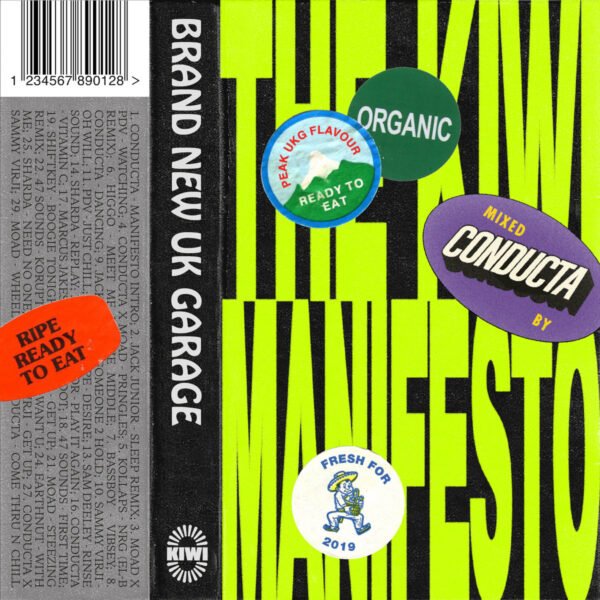
Calling it a full return might be unfair, since UK garage has always been present — but what Conducta and his label, Kiwi Rekords, have orchestrated from Bristol over the past 2 years is both a reinvention and a reclamation, an injection of sucrose into a genre that’s appeared to tiptoe between revivalism and empty nostalgia since its commercial peak. The pure horsepower behind the Kiwi movement has been clear since the meteoric impact of AJ Tracey and Conducta’s “Ladbroke Grove” in 2019, but Conducta’s landmark mix of 2020, The Kiwi Sound, is a stake in the ground, stated proof of longevity.
Part of the magic lies in the range Conducta traverses. The Kiwi Sound is an anointment of new standards (kicking off with “Ladbroke Grove” and ultimately arriving at Jorja Smith and Preditah), but also a peek into what feels like an endless vault of Kiwi reworks and originals. Like any mix there’s connective tissue, but Kiwi Sound also captures what’s fast become Conducta’s trademark: his pulse. His kinetic urgency is skittish, but also conveys a steadfast understanding: no, you don’t understand. There’s more. This is the most dense, deep, and unlimited the Kiwi Rekords vault has ever felt.
Much of what defined Conducta and Kiwi’s 2020 was their collective statement of euphoria, knitting together its community in a distant and fractured year. It was merch, it was care package releases, and it was remote Zoom block parties, all in neon. The Kiwi Sound is a reaffirmation of that vision, a new chronicle, a new national Little Black Songbook being scribed in real-time. It’s hard to express for me how important this mix was — over my summer, even caged indoors with the rest of the world, Kiwi thawed my paralysis around music into something ecstatic again. The glee with which The Kiwi Sound uncovers new crevices of a classic sound is a genuine celebration. — SUN-UI YUM
28. Actress – Karma & Desire [Ninja Tune]

Darren Cunningham couldn’t have chosen a better stage name. As Actress, he concocts galaxies of smoke and mirrors. His music is by no means anonymous, but it is similarly difficult to pin down; he slips between roles with ease, applying his singularly dour lens to electronic music in new ways each time. This was clear as early as his debut LP, Hazyville. The title alone implies his ethos: a dense fog, a dimly familiar silhouette, another world.
In the decade-plus since, Cunningham has honed in on all sorts of styles: broken-machinery techno, abandoned-city musique concrète, haunted chamber music. On Karma & Desire, he changes the script yet again. His characteristic austerity remains, but here, a bit of sunlight penetrates the murk. For the first time, voices come from other souls rather than corroded time capsules. Even the record’s queasiest moments house a groggy sort of beauty.
As Cunningham explores this uncertain territory, he finds countless crevices to traverse. “Save,” a slow-motion dance for piano and chamber orchestra, finds an uneasy unity between clashing key signatures, abyssal basses, and skyward arpeggi. For “Many Seas Many Rivers,” he chops Sampha’s voice into a million fragments and scatters it in a pianola; the result is both elegiac and robotic, unrecognizable and deeply human. “Loveless,” the record’s most explicit nod towards the dance floor, features a bassline coated in years of AM-radio static.
Much of the record works in this manner: familiar idioms played on alien and broken machinery. Cunningham’s music has long lingered on the morose and unknowable; it is frequently mournful, but it seems to yearn for a future that never was. On Karma & Desire, the fog remains uncompromisingly dense, the songs both opaque and intangible. But the silhouettes, once barely legible, start to sharpen, and the greys brighten just a bit. — MICHAEL MCKINNEY
27. Jeff Parker – Suite for Max Brown [International Anthem]
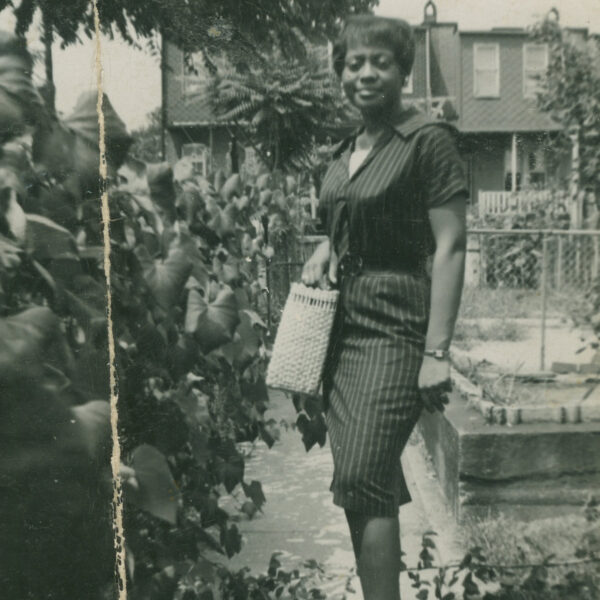
It’s a little strange to even have Jeff Parker’s name on this album. As guitarist for post-rock wizards Tortoise or playing alongside saxophonist Joshua Redman and trumpeter Rob Mazurek, Parker is often doing his job best when you don’t notice that he’s there. He adds the texture and noise and background bounce while the other musicians are taking their spotlight turns. Parker deserves top billing on Max Brown, though. It’s his production and vision that pulled this rich, colorful album out of the ground.
Parker started with a hip-hop mixtape-inspired aesthetic, building from the raw material of a Dilla-like loop of an Otis Redding song, programmed beats, and flipped samples of his own playing. With all that serving as the foundation, he and his talented buddies, including Mazurek, drummers Makaya McCraven and Jamire Williams, saxophonist Josh Johnson, and bassist Paul Bryan, vamp and strut and splash around. Even at its bluesiest (the slow rolling “3 For L”) and spaciest (a glassy-eyed rendition of John Coltrane’s “After The Rain”), Max Brown sounds like a bunch of tech-savvy music geeks strapping on instruments and fucking around. If they find a little glimpse of the future in the process… even better. — ROBERT HAM
26. Chris Crack – White People Love Algorithms [New Deal Collectives]
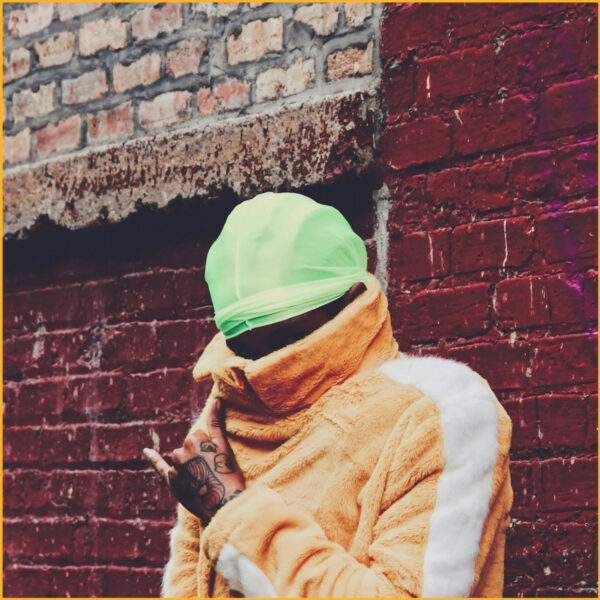
It’s easy to fall in love with everything Chris Crack does. His album titles and song names are peerless, his nasally flow both iconic and inviting, his one-liners relatable but never obvious. But beneath all of the flash that immediately grabs your attention lies a knotty intricacy that rewards multiple listeners and casual fans alike. Crack is able to write alternative world radio hits that make indie heads memorize every word, street anthems that could make even the queasiest skeptic nod along with a smile.
For those not keeping track, White People Love Algorithms is one of four excellent LPs from the Chicago MC in 2020, and while any of those four would be a worthy addition to this list (especially Haters Forget They Were Fans First, which features a shoutout to yours truly), Algorithms is the best distillation of his superb style and creativity.
The record starts with a not-at-all veiled shot at a former collaborator and never lets up. Back to the peerless song titles, there’s a song on here called “Chipped My Tooth Eating Pussy,” and while I cracked a pearly white a while back on an M&M, I like this story more. Another standout, “Hoes at Trader Joe’s,” sits right in the middle of the album, and over a bed-shakingly sexy beat Crack rhymes, “Instagram poppin’ but your life trash, bite that/And it’s me against the world, no more pop shit/Shock them, this shit is for the gangsters/Hope they knock this.” The internal rhymes keep the flow together, and Crack’s cadence effortlessly floats above the hollow bongos and soaring backing vocals. The next track, “More Art, Less Thought,” is a philosophy of sorts for Crack, but he often betrays his own maxim, creating immediately accessible raps that further reveal themselves after every listen. — WILL SCHUBE
25. Popcaan – FIXTAPE (Full SoundCloud Version) [OVO Sound]
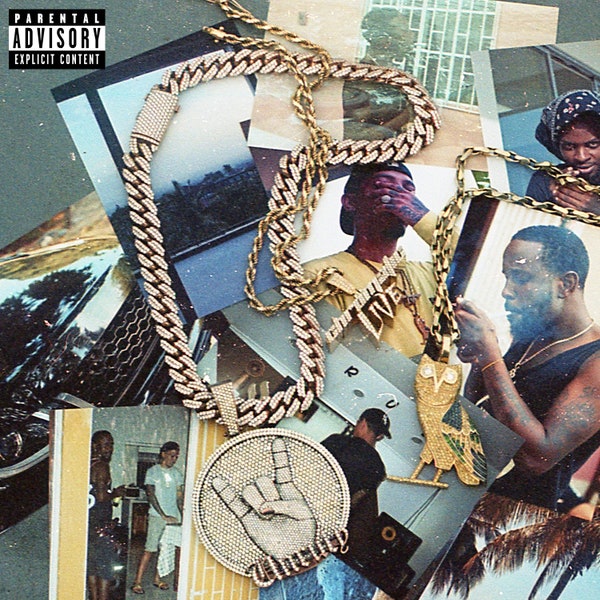
There are two versions of Popcaan’s Fixtape floating around the internet. The first is the 19-track album available on streaming platforms: a loose tale of love, violence, and triumph with appearances from former Gaza associate Tommy Lee Sparta, Masicka, and Drake, whose OVO label he signed to just over two years ago. It’s sleek and polished, wasting no time on introductions and transitions as Popcaan’s story unfolds. This is all contradictory to the nature of dancehall — a genre best experienced in a sweaty bashment with speakers surrounding you on all sides. On the true version, which lives on SoundCloud, you can hear the colossal 90-minute, 32-song mix, which captures his full vision of what a dancehall project can be.
Fixtape opens with a harmony of gentle keys and strings which blossom into a touching cover of his 2011 hit “Only Man She Want.” Popcaan immediately shifts gears after by banging on his chest, fearlessly flipping Nas’ “Hate Me Now” on “Killy Dem Crazy.” Without the restrictions of sample clearance, he’s free to try his hand at any riddim. Dreamy tracks like “Twist & Turn” and the Jada Kingdom-featuring “Suh Me Love It” would have been played at parties all throughout the summer if not for COVID. Drops from Jamaican artists Lila Ike and Protoje, as well as UK rapper Kano are peppered throughout the mix. There’s no shortage of musicians ready to give Poppy his flowers.
For the first time on a full project, Popcaan’s full range is on display. Popcaan wished for people to be able to “appreciate the dynamism of dancehall music” in an interview for FADER. The mixed version of Fixtape is an ambitious and vibrant attempt at telling the story of Popcaan’s ascension to dancehall royalty that stays true to the genre’s rebellious and braggadocious roots. — BRANDON CALLENDER
24. Kamaal Williams – Wu Hen [Black Focus]
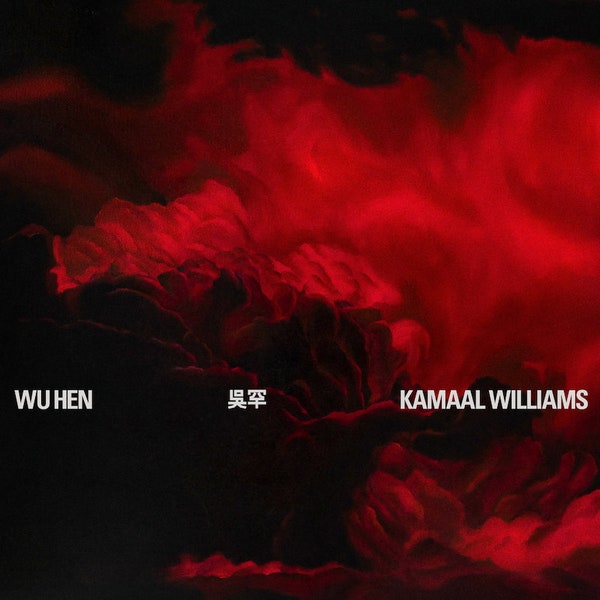
Kamaal Williams’ The Return (2018) was the continuum. Picking up where he’d left off as one-half of Yussef Kamaal, the album serves as a spiritual sequel to the duo’s Black Focus (2016), offering a clear message that Williams wouldn’t allow that work to go uncontinued. With Wu Hen, the South Londoner brings an alternative self into his mainstream universe. The title references Henry Wu, the moniker Williams has over the years released house music under. If Wu Hen proves one thing it’s that Williams didn’t need to apply that dichotomy. Soulful house bop “Mr Wu” fits next his established jazz-funk sound on tunes like “1989” like pieces in a puzzle. This modern jazz man is still expanding himself too: “Pigalle” is a Coltrane-esque wig-out, the gloriously sleazy saxophone of “Early Prayer” gives the tune a stifling lounge jazz vibe, while the introduction of Jon Brion-esque strings to Williams’ arsenal add an extra lair.
Even with the upgrades, Wu Hen manages to not only spotlight its creator’s musicianship and skills as an arranger, but also encapsulate the diverse London jazz scene that he cruises. — DEAN VAN NGUYEN
23. Chloe x Halle – Ungodly Hour [Columbia Records]
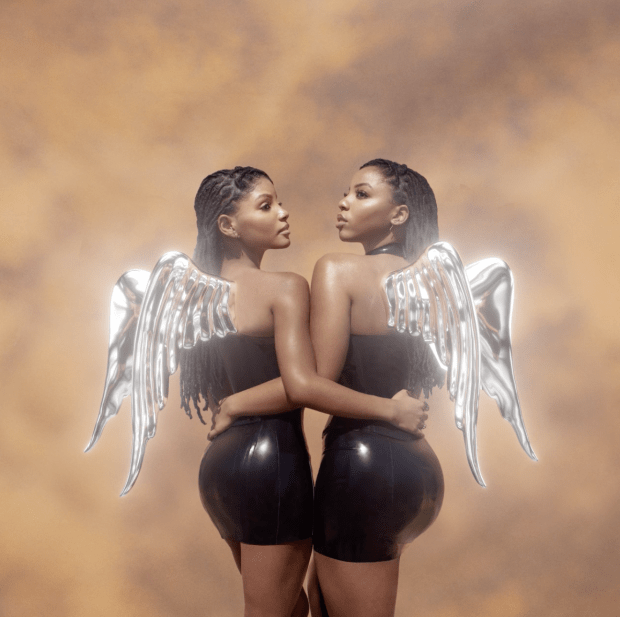
While haters might dismiss the sound of sisters Chloe and Halle Bailey’s second album, Ungodly Hour, as merely mid Beyoncé, that assessment belies a rich complexity, as the duo finesse an assortment of styles on a brilliant and ambitious album. On “Overwhelmed” they own the alien baroqueness of Janelle Monae, without her tendency for overdoing it; on “Do It” they channel Ariana Grande’s Mariah bounce even more effortlessly than Grande herself (with help from the pop megastar’s close collaborator Victoria Monet); and on “Busy Boy” they nail something Missy could’ve written for Ciara. On “Baby Girl” and “Tipsy,” yes, they do sound a lot like Beyoncé — but I would argue it’s top shelf, nothing lacking. And the best song is “Forgive Me,” where the singers stride regally over producer Jake One’s knocking hip-hop instrumental.
Throughout the album, Chloe x Halle are musical gymnasts, downplaying vocal acrobatics and sticking their landings easily. The end result finds them exceeding their somewhat manufactured beginnings (teen actors with a YouTube channel, mentored by Beyoncé), and confidently claiming their roles as expert song makers. They also happen to be able to kill fashion editorials on a regular basis — with guidance from Beyoncé’s artistic director Andrew Makadsi and the stylist Zerina Akers — making them suited to contemporary pop’s highly visual nature, and even more likely to stick around.— ANDREW MATSON
22. Open Mike Eagle – Anime, Trauma and Divorce [Auto Reverse]
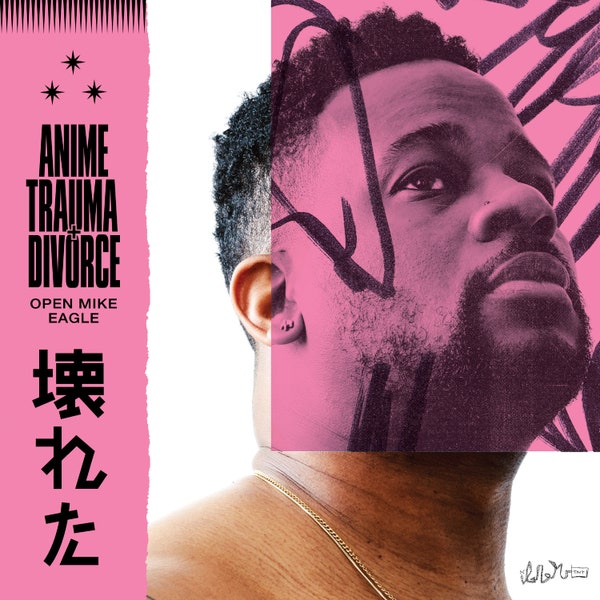
Open Mike Eagle isn’t here to tell you he had a worse year than you did, but thankfully, he is willing to share the wisdom he’s accrued and the healing process he’s started on Anime, Trauma and Divorce. Putting aside the worldwide shit show we’ve each experienced due to the pandemic, 2019 decide to pimp slap OME across the face with the lingering effects of the mid-decade dissolution of the Hellfyre Club (his longtime L.A. crew of collaborators and companions), the cancellation of his fledgling Comedy Central series and the dissolution of his 14-year marriage. While he would have been forgiven for an album of cathartic caterwauling, Eagle instead invited listeners into the hip-hop equivalent of a couch session with a trusted therapist, tackling everything from the aforementioned crises to realizing that he’s somehow developed a Dad Bod and that he can’t get out of his own head-assery.
Once again, OME works with beatsmiths who help flesh out his own unique style, from Caleb Stone and Gold Panda to Black Milk and Frank Leone, all artists who truck in laid-back, Saturday afternoon AM jams that never overpower Eagle’s heartfelt emotions, pop culture references or well-crafted wordplay. The album succeeds because it never once wallows in self-pity, but instead focuses on what went wrong and how to improve, utilizing everything from a burgeoning understanding of self-care to finding solace by bonding with his son, who shows up on multiple tracks for the first time. This is stage four or five grief, where the initial pain has been processed and the work of rebuilding is underway. 2020 having been the trainwreck that it was, Open Mike Eagle dropped the constructive album we all needed to hear. — CHRIS DALY
21. Aesop Rock – Spirit World Field Guide [Rhymesayers Entertainment]
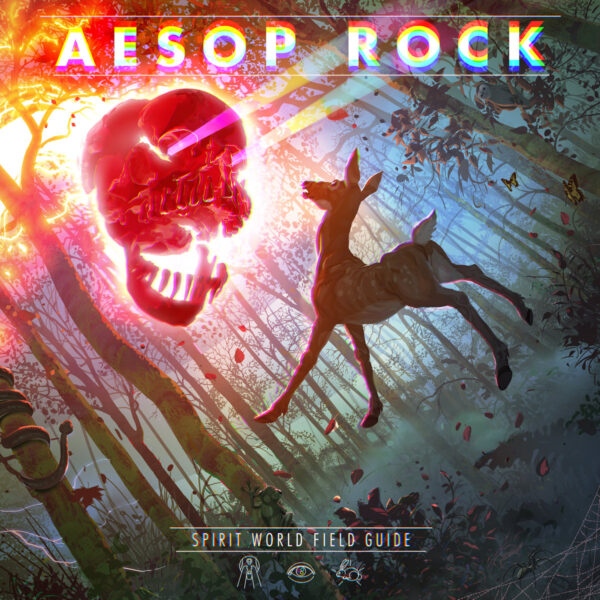
If you look back at the near three decade run of Aesop Rock album covers, you’d notice that his preference in artwork has rarely been mundane, smooth, or relaxing. He has leaned into the grotesque (Malibu Ken, Bazooka Tooth, None Shall Pass), the disheveled (Labor Days, The Uncluded), and the occult (Skelethon, The Impossible Kid). The artwork for Spirit World Field Guide is haunting but bright; the edge of his horror is controlled by forces bigger than ever.
Because really, as a middle-aged master of every facet of rap, what is more terrifying than chronic back pain (“One to Ten”), an unseen noise that freaks out your dog in the woods (“Dog at the Door”), and graying temples slowly edging you closer to your own mortality (“Jumping Coffin”)?
Spirit World pushes itself near the top of Aesop Rock’s catalog, a rare feat for a career kickstarted from CD-R copies of albums given out at shows in 1997. He’s rapping sharper than ever with zero guest appearances. His production now falls into a Tom Waits sphere of insular mastery where the worlds he creates must be led by its own ferryman.
Eight years after his last masterwork Skelethon, an album embracing isolation and grief, Spirit World is fierce and focused, inspired after a pair of sojourns to Peru and Thailand. The album is a journey, meant to be played front to back. There are no playlists in the Spirit World (duh).
The exception is “Pizza Alley”, half a tribute to a popular eating spot in Peru, half a salvo for lost travelers swallowed up by unknown monstrosities in the Amazon jungle. But Long Island’s finest specter doesn’t wallow; his arms wide open embrace of the damned in turn backs down the sweltering abyss. “The river boils when it sees me.” – ZILLA ROCCA
20. Yves Tumor – Heaven to a Tortured Mind [Warp Records]
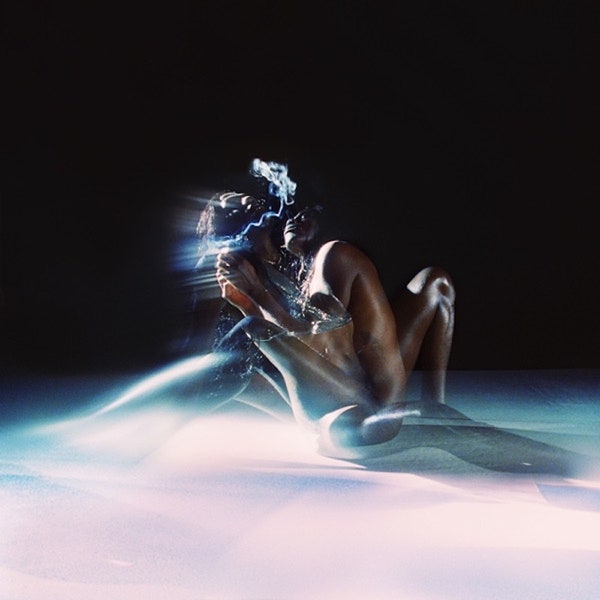
When it comes to characterizing our modern political discourse, the concept of “horseshoe theory” is mostly bullshit that radical centrists use to justify not raising the minimum wage or conducting illegal surveillance on anti-fascists or whatever; but when it comes to Yves Tumor and fucks, it’s dead on the money. It’s basically impossible to tell whether this is a person who doesn’t give even a fourth of a fuck, or if they give every single fuck that has ever existed in this and any other reality. When I saw the artist born Sean Bowie perform live in 2019 at Moogfest in Durham, N.C., they used a prime-time slot on the festival’s biggest stage to play a set that was almost entirely harsh noise, capped off by two minutes of the most beautiful gospel-drone sounds I’ve ever heard. The moment those final chords hit and I regained the capacity to think, the first thing that popped into my brain was that the person standing on the stage was clearly a genius and that anyone in the audience who was mad at what had just happened and/or covering their ears clearly was not.
On their 2018 record, Safe in the Hands of Love, Tumor definitively proved their capacity to mix softer, or at least conventional, pop styles amid more jagged compositions, but with this year’s Heaven to a Tortured Mind, they just absolutely went for it. This is music meant to be played loud, live, and preferably in a big space full of writhing people, sexy sex-rock made by a sexy person whose on-record persona screams “I have a lot of sex.” I’m convinced that if not for the pandemic, Yves Tumor would be playing at the Super Bowl in 2031 (as the Weeknd has proven, a person’s reward for making a huge-sounding indie record is getting booked to play the Super Bowl a decade after you put it out). Was it Kierkegaard or Dick Van Patten who said, “Only by not giving a fuck can you make an album that sounds like you give every fuck”? All I know is that if Yves Tumor’s legal last name weren’t already Bowie, they would have changed it.— DREW MILLARD
19. Khruangbin – Mordechai [Dead Oceans]
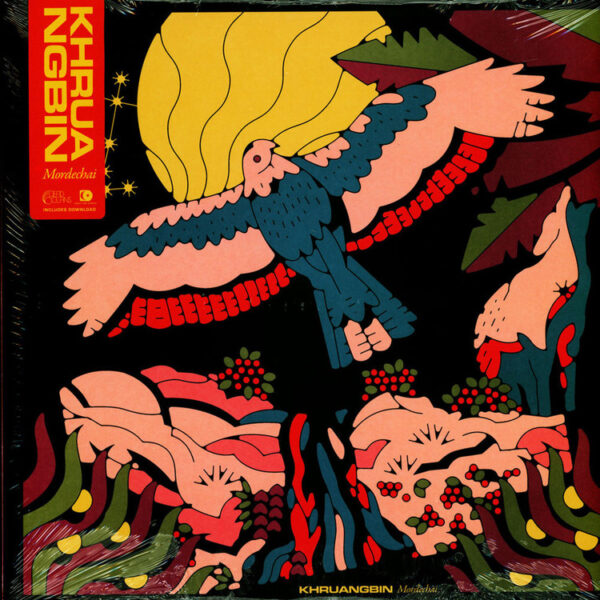
When I ran into drummer Donald Ray ‘DJ’ Johnson Jr. at a festival in 2019 and complimented him on Khruangbin’s latest album, he seemed genuinely taken aback that I recognized him at all. Though Johnson is the only member of the trio not wearing a black wig when performing, and therefore the easiest one to recognize, he could still walk among the audience unbothered. Despite having two critically acclaimed albums out at the time and being booked to play the main stage in mere hours, Khruangbin was an enigma.
That air of mystery is part of their appeal. Knowing bassist Laura Lee and guitarist Mark Speer started wearing those wigs so people wouldn’t recognize them when they’d be selling their merch later on, doesn’t negate its effect. The Texas trio not appearing in their own videos doesn’t hurt either, but mostly it’s maintained through the music itself, which sounds like walking around in a lucid dream.
Previous albums would each focus on primary sources of inspiration, ranging from 1960s Thai psychedelica, Middle Eastern music or dub, with Lee’s heavy bass grooves as common thread. Mordechai manages to pull from all those directions, along with with funk, soul and a dash of Serge Gainsbourg, and build further from there. That makes it their first album wholly its own type of animal. A sleek, majestic one, at that. Definitely some kind of cat.
And much like with cats, you can never tell what exactly is going on with Mordechai. It’s the first album of theirs that features vocals on most songs, adding structure where earlier they seemed more concerned with building mood. They’re sung, spoken or whispered in a myriad of languages, with lyrics that all hint at larger stories playing out somewhere.
On their most accomplished album so far, Khruangbin remains a cypher. One so enticing though, that only 2020, you know, 2020-ing, could prolong their lease on relative anonymity. For now.— JAAP VAN DER DOELEN
18. Jyoti – Mama, You Can Bet! [eOne Music / SomeOthaShip Connect]
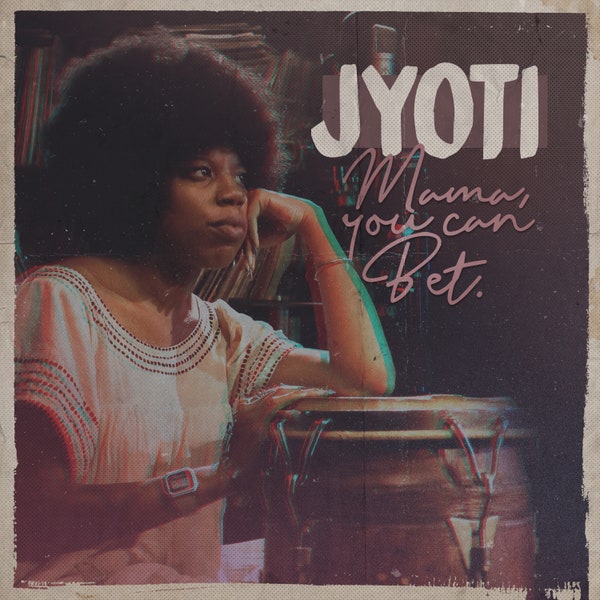
The child of session musicians who made Chemise’s “She Can’t Love You” — and who separately worked with Pharoah Sanders, Michal Urbaniak, Eddie Harris, Hubert Laws and knew Alice Coltrane — is destined to make a great jazz record. Georgia Anne Muldrow has long been an amazing producer, working at the intersection of hip hop, electronic music, jazz and soul. But on this record, using the name given to her by Coltrane herself, she made a great jazz record virtually by herself — playing just about every instrument (save for a guest appearance by saxophonist Lakeica Benjamin.)
Mama, You Can Bet is a one woman tour de force through the sounds of the L.A. jazz scene, that sounds like it was cut live at shows across the city. First there’s the head nodding spiritual jazz funk of “Zane, The Scribe,” that sounds like it was recorded at a jam session at The World Stage. Then, there’s the gospel tinged soulful piano ballads “Our Joy (Mercedes)” and “Orgone” that sounds like you should be enjoying some wine and expensive nachos at the classy Catalina Jazz Club. The post-bop, ECM vibe of “Skippin and Trippin” sounds like the crystal clear acoustics of the Blue Whale. “Ra’s Noise (Thukumbado)” sounds like a tune you’d hear people grooving to outside at the Central Avenue Jazz Festival. On one of the best tracks, “Fabus Foo Geemix,” a remix of Charles Mingus’ “Fables of Faubus,” Muldrow hits on a deep, funky, goldmine, marrying the bass and bounce of funk and Low End Theory style beat music with the free flowing swing of jazz. Just keep playing this on repeat until we all get the vaccine and can safely go back to listening to more jazz together. — SAM RIBAKOFF
17. Roc Marciano / Stove God Cooks – Mt. Marci / Reasonable Drought [MARCI ENTERPRISES / ART THAT KILLS / The Conglomerate Entertainment]
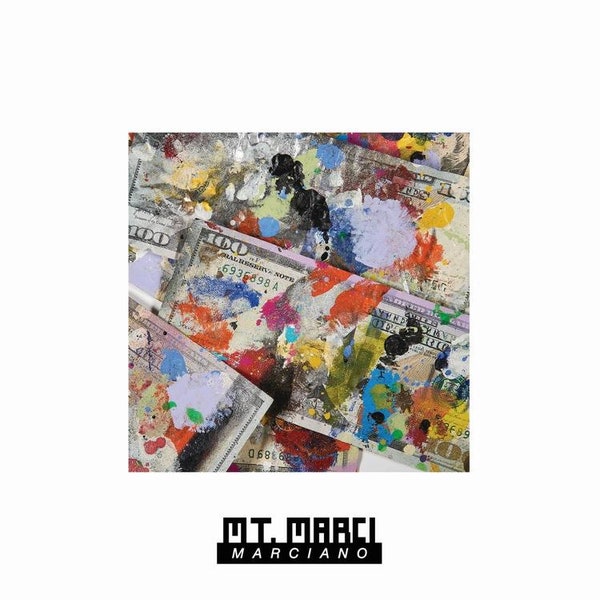
Roc Marciano raps in such a sinister way that a priest might call him the antichrist. Listening to Roc is like hearing a criminal nihilist tell kids stories that you aren’t allowed to tell your parents that you heard. Sometimes it will be about his life of crime, where his vivid descriptions can send a chill down your spine. Sometimes it sounds like it’s from a Patrice O’Neal stand up segment (’I’m in the pussy doing the stanky leg.’) In the same poetic way you saw Kobe’s footwork, you hear Roc’s descriptive gifts. Mt. Marci is merely the latest gem from the Long Island rapper.
Sometimes we see how underground and how great Roc Marci is and forget how strong his production is. On Reloaded, his 2012 masterpiece, it felt like he was challenging us to hear rap in a different way: Stripped down to its basics with no drums. Roc Marci, with his distinct gravelly voice, fit that perfectly. A good producer sticks with that because it works for him. A great producer reveals other tricks for different rappers that may not sound like them. Stove God Cooks’s Reasonable Drought is different from Roc Marci albums: Cooks isn’t the formal writer Roc is but his flow is more unpredictable and he can be more melodic too. Sometimes he harmonizes like Max B on ‘’Jim Boeheim.’’ Roc Marci laces Cooks with soundtracks to 70’s movies about the inner city. ‘’Money Puddles’’ sounds ominous as if you are following a man who’s about to catch someone slipping on his block. It’s time to not only start talking about Roc Marci as an all-time rapper, but the best rapper and producer not named Q-Tip. — JAYSON BUFORD
16. Moodymann – Taken Away [Kenneth Dixon]
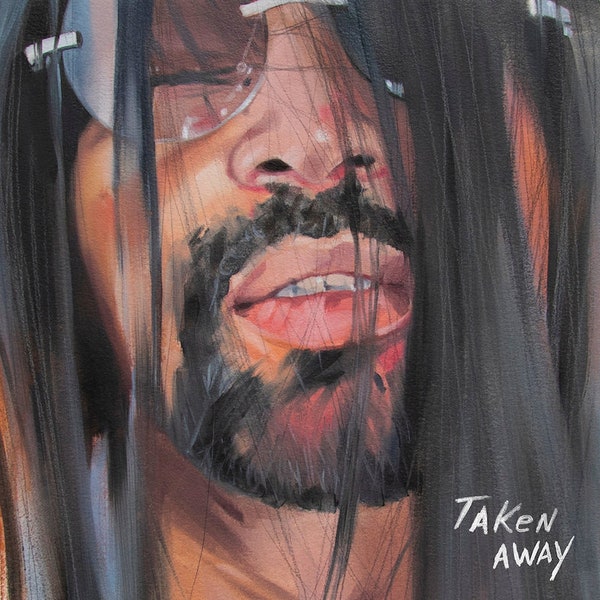
In an era where the electronic elements of dance music are used to dehumanize the funk and insidiously erase Blackness, Moodymann is the effortlessly cool counterpoint. Proudly flying the flag for Detroit’s musical lineage abroad while organizing Soul Skate parties at home, the Prince shrine-owning, MPC fingerfucking, Kenny Dixon Jr. may not have spoken much over the course of his 25-plus year career, but given his every utterance has been sampled and flipped into jam after jam, he’s never had to. On Taken Away however, Moodymann has a lot to say, through his own words, those of his collaborators and through sampled echoes of the past. Here, the club, the church and the streets are one, Al Green’s moans interrupting sermons about smacking the devil out of you, police sirens blaring while the choir begs for someone’s life, and snow crunching underneath Moody’s boots as he walks through Detroit.
This sense of place is key to Taken Away, the guiding light to making sense of the joy and pain of being Black in America in 2020. Sampling the Black church isn’t new, but in the wrong hands (hi, Moby) it’s a cheap shortcut to an unearned authenticity at best, and cultural theft at worse. On Taken Away however, there’s no distinction between past and present, sampler and source. Voices and fragments of daily life are rearranged in a séance, love spilling into heartbreak and the party spilling over into the after party and the workday once the weekend has dried up. International festivals and trends are ignored but Marvin Gaye’s pioneering work on the 808 is an evergreen concern. This isn’t electronic dance music, but instead soul music you can dance to, assisted by the tools of today to produce a righteous, militantly rhythmic funk.
Too honest to be the caricature outsiders often view him as, and too comfortable in his own skin to compromise his Blackness for dance music’s egghead elitists, Moodymann is honest to a fault, revealing his joy and his hurt across Taken Away. It’s a record haunted by ghosts, but also a reminder that we’d be lost without them. — SON RAW
15. Quelle Chris & Chris Keys – Innocent Country 2 [Mello Music Group]
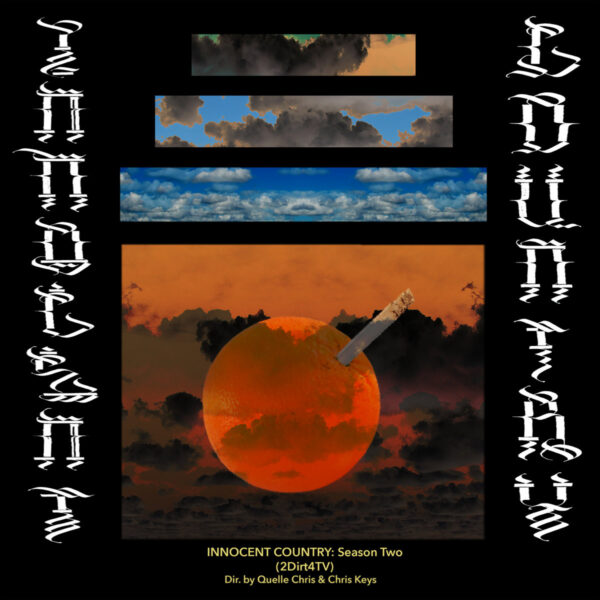
The 11th release by Quelle Chris, Innocent Country 2, opens like the preview of a sci-fi thriller. The album’s name teases a fictional series that sounds like a cross between Game of Thrones and Blade Runner. As the follow-up to 2015’s Innocent Country, this is music as therapy. Music made for survival. With his observational and humorous writing style at the forefront, we see Chris come into his own as an adept poet on Innocent Country 2.
Social commentary mixes with motifs from the past; doing the cat daddy is just as important as remembering that black cats are good (or bad) luck. There are also theatrical monologues. In “MOMENTS,” comedian Josh Gondelman doles out eye-opening thought regarding people’s relationship with time. Innocent Country 2 also boasts guest features from Earl Sweatshirt, billy woods, Homeboy Sandman, and Pink Siifu, but what ultimately binds the album with such cohesion is the chemistry between Chris’s singular voice and producer Chris Keys’ elegant instrumentals.
The pair’s craftsmanship is most palpable on “SUDDEN DEATH,” where Chris hums instinctively over the lush piano coda. Almost haunting in its realism, the video depicts Chris among corpses that are sprawled over coolers and concrete. Unbothered, he grooves along with his fanny pack and purple nylon windbreakers. Acutely aware of his surroundings, our protagonist seems nonetheless content living in his own universe. Given the significance of isolation in 2020, this is a striking piece that begs the question: what role do individuals play in a group?
Other songs lay bare the difficulty in living in the present based on complications from the past. On the standout, “Graphic Bleed Outs,” Melanie St. Charles annihilates a flute solo before Merrill Garbus muses, “Oh what happened to us…you cut me like a knife.” Before the words can sink in too deep, however, the chords resolve. An invisible weight feels lifted. And when Chris catches the pocket into his final verse, it becomes clear this series has a happy ending. For now. — EVAN GABRIEL
14. Ka – Descendants of Cain [Iron Works Records]
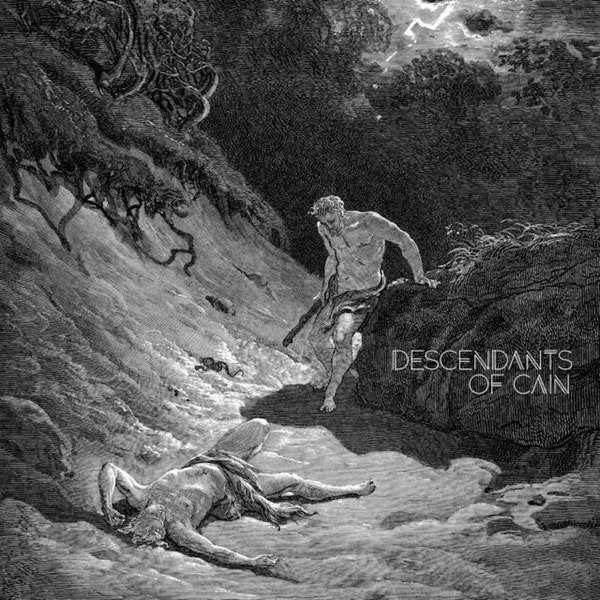
A Ka solo album shouldn’t mean as much as it does.
Ever since his first proper outing, 2012’s Grief Pedigree, Kaseem Ryan has achieved amazing things alongside Preservation (Days with Dr. Yen Lo), Animoss (Orpheus vs The Sirens) and the mandatory Roc Marci beat and guest verse. And yet, it hits different every time he’s (mostly) left to his own devices. All of the aforementioned contributed to Descendants of Cain, but the lion’s share of the album is written, produced and first-hand experienced by Ka. (The latter is still important, as he makes clear halfway through the album: “I live this vivid shit, I ain’t that creative.”)
“These albums have to be fun for me, too, and if I put my own spin on something, it makes it fun for me to write. It’s good to have an idea before I go in,” Ka told me when we first met at Brooklyn Museum, five years ago for this very rap blog. Having subsequently used chess, The Manchurian Candidate, samurai codices, and Greek mythology as grand metaphors, he now returns to the biblical, and the most essential worry of them all for a first-responder and MC who came from a house of addicts: Am I My Brother’s Keeper?
This familiar ground is where Ka allows himself to be his most daring. On “Patron Saints” he runs down a list of ill-advised role models he’s encountered in Brownsville, ending on an utterly harrowing “our heroes sold heroin.” Album opener “Every Now and Then,” with its heavy strings loop and piercing, distorted guitar sound feels like the sequel to Honor Killed the Samurai’s “Conflicted”. And off-kilter highlight “P.R.A.Y.” legit sounds like he’s rapping over a randomly looped Weld-era Neil Young guitar feedback.
The experimentalism never kills the troubled mood that runs through all of these 11 miniatures. I used to think that that’s what made Ka’s style most powerful – a knack for stories that are obviously sourced from personal experience, but expressed in a demeanor that remains transcendent, bodiless. I didn’t like when it became too mundane and concrete, like naming his favorite MCs on The Night’s Gambit’s “Off the Record”. This changed with Descendants’ album closer, “I Love (Mimi Moms Kev),” a three-part love song as stripped down as they come. One verse for his wife – music journalism vet and film producer Mimi Valdes – one for his mother, and one for his late friend and MC partner in Nightbreed, Kev. Throughout the album, Ka hovers over his own trauma. Here, he slips back into his physical form and shows off his vulnerabilities with no layers left.
He might have been one all along – but with Descendants of Cain, Ka has fully become his own genre. — JULIAN BRIMMERS
13. Westside Gunn – Pray For Paris [Griselda Records]

37-year-old Buffalo rapper and Griselda Records founder Westside Gunn is the latest in a long line of emcees to give drawn-out explanations as to why he’s so much more than the antiquated classification of a rapper. Instead, he’s a curator. He does things like enlist Virgil Abloh to spend under five minutes photoshopping Carvvaggio’s 1607 oil on wood painting, “David with the Head of Goliath,” for his album cover. He rocks San Jose Sharks jerseys and white ski masks to Paris Fashion Week all in the name of being a self-proclaimed FLYGOD. His hand-crafted Blientele merch looks like it belongs on the sale rack of your local Footaction.
These extracurriculars and his insistence to push aside what he’s inarguably best at – being a rapper – are what make Westside a true one-of-one, a character in the vein of a 90’s wrestling villain that he’ll so readily reference in his music. That, and his voice, automatically tuned up an octave, layered with endless ad-libs of machine guns and cars peeling out.
Before announcing his retirement from rap earlier this year, Westside released Pray for Paris, his album where de facto gangster rap met Italian Baroque-era opulence. He was inspired by his first trip outside of the United States where he soaked in the City of Lights’ runways and art galleries. A week in the French capital was all it took to finalize the album. There’s traditional rap gaudiness and then there’s Gunn’s ostentatiousness. He kicks off the project with a recording of the auction of Leonardo da Vinci’s “Salvator Mundi” painting at Christie’s New York, which sold for a record $450 million USD. It’s enough to make your eyes roll.
But Pray for Paris finds Westside delivering the best verses of his career amongst his most talented peers: Tyler, The Creator, Roc Marciano, Freddie Gibbs, Joey Bada$$ and more. He’s hardly the first emcee to connect luxury fashion to pyrex pots, but Gunn does it with reverence, humor and originality. “Goyard leashes on all-red Saint Bernards/ Saint Laurents, water whip the coke with the Avian,” he raps on “Euro Step.” The instrumentals are lush yet minimalist. Westside’s intangibles and charisma make Pray for Paris more than the sum of its already stellar parts. You can thank his role as a curator for that. — PATRICK JOHNSON
12. Burna Boy – Twice As Tall [Atlantic / Bad Habit / Spaceship Record]
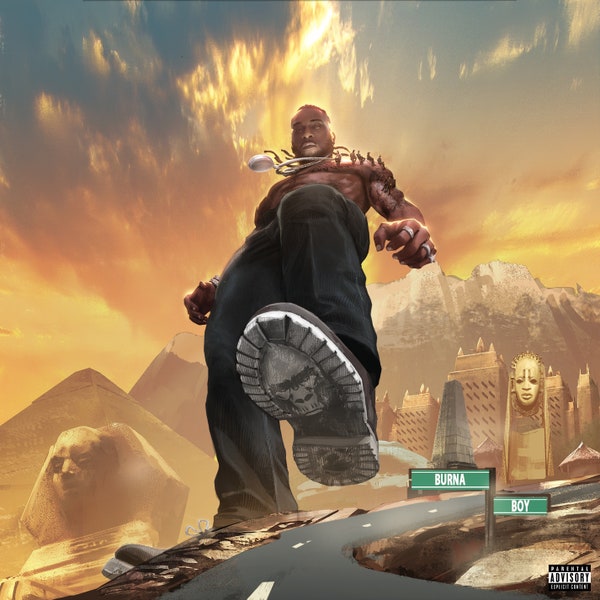
Coming off the heels of last year’s African Giant, Burna Boy really could have done anything he wanted to. The world has already come to him. But once you’ve done it all, the only place to look is inward. There’s plenty of somber introspection on Twice As Tall but there’s still plenty of Afrobeats too, with rap and dancehall serving as a counterpoint. The tone is set on the intro, when Burna drops all pretense and admits to being sickened over losing the World Music Grammy to Angelique Kidjo. He’s back to boasting again after an obligatory pep talk from executive producer, Puff Daddy, but before long, he’s looking to the past for different sources of inspiration.
“Onyeka” weaves a love note to singer/activist Onyeka Onwenu into one of his laments about being unable to settle down with just one woman. “Naughty By Nature” swings through one song later, featuring the real Naughty By Nature sounding perfectly preserved from their ‘90s peak. Burna’s got a lot on his mind and he’s looking to unburden himself. All those who didn’t wish him well in the earlier stages of his superhero arc are given their final kiss off in the form of an extended shrug (“No Fit Vex”).
“Monsters You Made” nods to his more selfless side, as he lays bare all of the institutional failures that beget street violence. It’s the sort of song that could be applied to any number of similar failures all over the world. The album closes with a prayer, asking God for protection while making sure that he has enough of his own.
He was staying down the road from the Los Angeles mansion where Pop Smoke was killed earlier this year. The fact that all of this could be taken from him at any time is far from lost on him. Of course, the album ends with a sly “Gangnam Style” reference because a true superhero can’t ever let the enemy see them sweat for too long. — HAROLD BINGO
11. Lil Uzi Vert – Eternal Atake / Lil Uzi Vs The World [Atlantic Records]

My daughter does not edit this list, and you can tell because if she did, this album would be the runaway number one pick. She was three the first time we listened to Uzi’s masterpiece in the spring. She’s four now, and whether I’m listening to music while making dinner, or we’re getting in the car after school, there’s only one album she still wants to listen to. I would never leverage my beautiful and perfect-in-every-way little girl to “win” an AOTY blurb. The point is quite the opposite. Her love of Eternal Atake tells you more about Uzi than it does about her.
Uzi is making the best music of his career. He’s making progressive rap that straddles buck anthems and gorgeous ballads over Ryuichi Sakamoto spacescapes. And he’s also making music for children. “You Better Move” should’ve been a song that filled bar and club dance floors all year, an aggro ear worm built for us to bounce off each other drunkenly as we happily screamed in each other’s faces; but it filled my living room on Summer afternoons with a five year-old and three year-old having a lot of fun, flailing around off literal juice, and falling over with laughter as they chanted along with Uzi’s Kidz Bop Drill. When you think about it, Uzi’s animated, hooting bars and that colossal hook employing simple melodic repetitive brilliance could only be described as Raffi-esque.
Uzi took the emo influences that made his very best songs when he was locked in, and some very annoying ones when he wasn’t, and did something with it that few of the pop punk bands that he listens to ever have: he evolved. His increasingly precise and polished rapping (See: his three minute masterclass, “Homecoming”) and his always polished singing (“I’m Sorry”, “Bigger Than Life”) have gotten closer together, and further from what anyone else in his lane is doing. The album is celebratory in substance, its Genius printouts read as an ebullient shopping spree. But on “Venetia”, and throughout, it’s tinged with the morose quality of a guy sitting to the side of the VIP booth he paid for, perhaps a bottle or two beyond his limit, wondering who all these people are and missing his dead friends.
My daughter’s favorite moment on Eternal Atake is the final one, a bonus song that samples the Backstreet Boys. It’s quintessential Uzi, taking about as saccharine a stick of Fruit Stripe as you will find, and teasing out the sadness in it, burying the vocal snippet in a sunken ship under a nautical mile of freezing cold water. Uzi reverts to the very best version of his old eye liner and wallet chained JNCO self, singing his fucking heart out, closer to Aaron Lewis than Lil Baby. And in the very rare occasions I hope to ever think back on this year again, what I’ll try to hold on to is the memory of my daughter’s thin angelic voice, singing along with her favorite artist from her child’s seat in the back, and being struck by how much it sounds like a lullaby. — ABE BEAME
Unranked: Chester Watson – A Japanese Horror Film [POW Recordings]
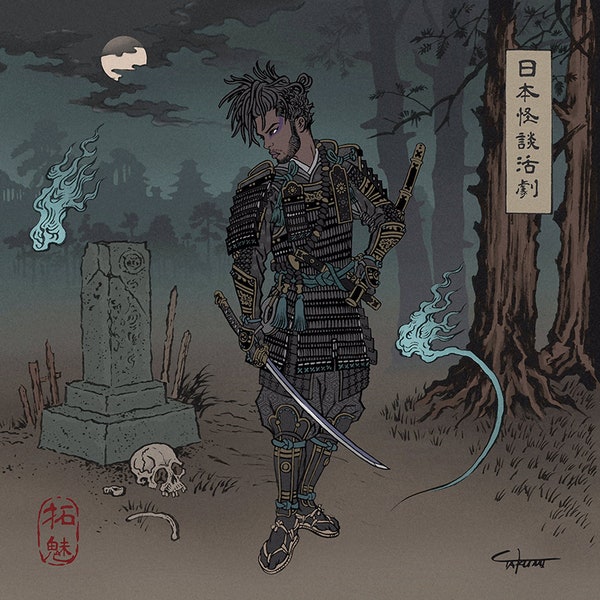
In Japanese folklore, it’s widely believed Yokai (demons) and spirits live all around you, hidden, tucked away in every crack and crevice. They’re the eyes you feel are on you when you’re alone, the fear that changes your direction at night. Immersed in Japan’s culture and ideology, Chester Watson’s A Japanese Horror Film is a spiritual journey into consciousness and existentialism. The 41-minute experience is stitched together with celestial, otherworldly whispers that haunt and guide the mystic vagabond to new corners of revelation. Chester’s world is clouded with weed smoke, hiding the entities spawned to skew his self-perception. On “Witch Hunter,” Chester responds to former friends that claimed he switched up, using their deception as the means for his actions. In the same verse, he exclaims he carries his demons like he carries small knives — concealed and used for protection against his enemies. Chester’s infra-red accuracy when it comes to wordplay, and his callous, somnolent delivery provides the haunting atmosphere behind A Japanese Horror Film.
Throughout the album, Chester is looking from the outside, looking in to see the faults along with the foundations of his world. Before the halfway point, on “Kushiro,” Chester is guided by an unknown presence, giving him an introduction to astral projection. Most of the themes on the project revolve around Chester’s drug use, whether it’s the Pink Sprite, or another spliff to further push his mind into a meditative state. Alongside the hypnotic, mesmerizing production, he often escapes the realms of reality, drifting from one idea related to his trials to the next. Japanese Horror Film is a stellar debut from one of the most unheard, riveting minds in 2020, exploring the different levels of thought through the guise of Japanese lure making this one of the year’s most compelling and ethereal experiences. — ANTHONY MALONE
10. Armand Hammer – Shrines [Backwoodz Studios]

With the incredible run that billy woods has been on, you wouldn’t think he could outdo himself— except he did. The command of his voice and words are astonishing, which is saying a lot if you’ve ever heard Armand Hammer, the duo of billy woods and one of rap’s clearest thinkers, Elucid—a Queens-born, Brooklyn-dweller whose purposeful takes are made for fraught times. On Shrines, Elucid sinks deeper into what makes him great, succinctly conveying worldviews with hairpin turns and illustrative detail. There are no punchlines. Subjects reveal themselves as he pulls back the camera. On “Solarium,” he says: “I’m dialing Arecibo, not an Uber. Power people, not computers. Black futures…”
It’s not just the chemistry between the two, though there are sparks when they play off each other. It’s not just the strong production, though hired guns Kenny Segal, August Fanon, Andrew Broder and others all bring stellar soundscapes. Shrines resonates by being a completely full statement. Even its cover is one of the year’s best, a 2003 photo of an NYPD officer dangling in front of an apartment ready to tranquilize a tiger (named “Ming”) whose menacing paws are calmly perched against the window from the inside. Shrines feels like the delicate and dirty glass between tiger and tranquilizer.
Armand Hammer don’t come up in conversations about best duos (and perhaps rightfully so) because they don’t feel like one. They occupy the same space in tandem as a monolith of personal insight and stray observations. They’re not the only ones in their current sphere or even on Backwoodz who are capable of doing this, but they’re uniquely brilliant at it. woods’ continues to enthrall with a blunt finality to his sentences. And Elucid is at the height of his prowess, stoic and measured, anchoring Shrines as a steady counterweight to woods’ ferociousness. A perfect push-pull to behold. — DAVID MA
9. Nubya Garcia – SOURCE [Concord Jazz]
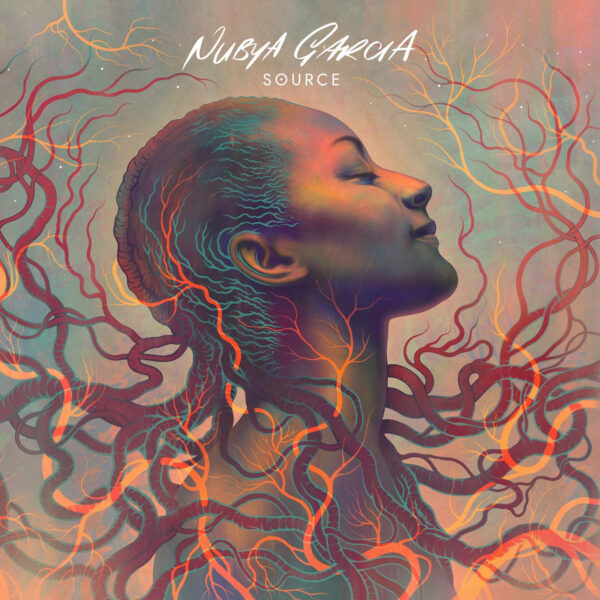
Every so often jazz Twitter decides it’s time to rehash the best albums that someone who wants to “get into jazz” should listen to. This fall’s edition was marked by the same old standby albums from Miles, Coltrane, Ellington, etc., etc. Even the “newer” records people mentioned were pushing 20 years old. But really, it’s never necessary to go back any further than 12 months to begin one’s jazz education. Along with the other jazz albums on this list, tenor saxophonist Nubya Garcia’s debut album Source presents listeners with multiple entry points. Born in London to parents from Trinidad and Guyana, Garcia has recorded or collaborated with drummers Makaya McCraven and Moses Boyd, the Sun Ra Arkestra, and saxophonist Shabaka Hutchings and performed at major international festivals. On Source, Garcia seamlessly moves from jazz to funk, soul, dub, cumbia, and other styles that people hear every day. This ability to make jazz relevant to the current moment enables Garcia and people like Kamasi Washington to draw and captivate eager “non-jazz” audiences.
Whether on the dub title track, the balladic “Together is A Beautiful Place to Be,” or the uptempo pieces “The Message Continues” and “Inner Game,” Garcia glides above her bandmates (keyboardist Joe Armon-Jones, bassist Daniel Casimir, and drummer Sam Jones). Her tuneful playing is more about melody, groove, and rhythm than flashy bombast. During her solos she slowly builds intensity and urgency, often leaning hard into her horn at the climax. The rhythm section has more in common with funk and hip hop than jazz: there’s hardly a walking bass line or ring-a-ding ride cymbal to be found. Armon-Jones’ shimmering keys provide color and a contrasting solo voice and Casimir is the center that allows Jones and his snapping drumming to frame the ensemble. The trio steps aside on two percussion-centric cuts.
“Stand with Each Other” is a duo between Garcia and Sam Jones and the Colombian cumbia trio La Perla joins Garcia on “La cumbia me está llamando.” The final song, “Boundless Beings,” features singer Akenya, whose appearance takes the band across the short bridge between jazz and soul. The ease with which Garcia and her bandmates move about different sound worlds points to the reality that jazz is more approachable and less bracketed off from other genres as people might suggest. Listening to Source and checking out Garcia’s peers will take you pretty quickly from London to Chicago, New York, and Los Angeles. At any point you can branch out into the most far-out reaches of the avant-garde or end up at Flying Lotus and Thundercat. If you do, you’ll see that getting into jazz doesn’t require doing 60 years of homework. Source is all the start you need.— CHRIS ROBINSON
8. Pa Salieu – Send Them to Coventry [Warner Music UK Limited]
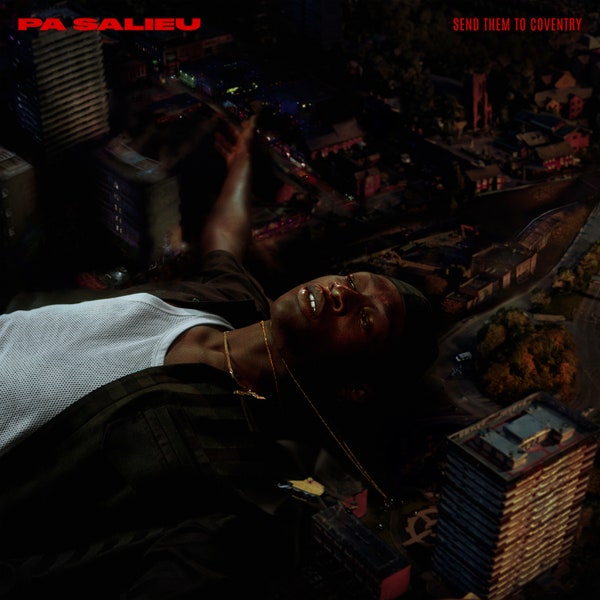
Between his emergence from a city that 99% of non-Brits couldn’t place on a map and having survived a drive by attempt in late 2019, Pa Salieu wasn’t the obvious bet for break out UK emcee of 2020. Surely a tapped in London driller or Afro-pop lover man would have taken precedence. Yet in a year without cheer, Pa’s sullen defiance and constantly mutating strain of Black English music was the perfect soundtrack – an ice grill that threatened to erupt into a full throated assault at any second. Crucially, Send Them To Coventry, his confident, masterful debut mixtape, is a one-of-one original, blending influences and steadfastly refusing to check any standard boxes.
Pa’s Gambian origins loom large, as he pulls from the current wave of Sub-Saharan Afrobeats without ever feeling beholden to traditions and styles birthed and monetized thousands of miles from both his adopted and ancestral homes. The Jamaican dancehall war dubs of Vybz Kartel, Jamaican music’s king in exile, are of equal importance, particularly as Pa’s clipped, economical vocals suddenly transition to melodic auto-tuned crooning without ever losing their menace.
From his adopted English home, he grabs grime’s sonic hollowness and UK drill’s deconstruction of the latest American gangsta rap, all without limiting himself to either genres’ tempos and rules — preferring to instead take stock of his dire surroundings before refracting them in totally new shapes and rhythms. It makes for a shockingly original and dangerously unpredictable listen, one that makes room for righteousness, rage, flirtations and remorse. At times, it almost reinvents English entirely, mashing Jamaican Patois, hyper-localized accentuations and Gambian dialect so thoroughly and futuristically that it makes standard spoken English sound like olde Norse in comparison.
Most surprisingly from an artist emerging from a singles based scene, Send Them To Coventry is impeccably sequenced, skyrocketing past the hedged bets of its mixtape status to rival canonical classic debuts like Dizzee’s Boy in Da Corner and Giggs’ Walk In Da Park. True, the intensity rarely lets up throughout, pivoting to warmth only on closing track “Energy,” but that only underscores Pa Salieu’s vast potential: he could just as easily pivot towards the mainstream hit making side of his influences as he could dominate the underground given how tightly he’s got the critics wrapped around his fingers. Whichever path he chooses, having delivered a classic in Send Them to Coventry, Pa Salieu can rest easy knowing that he has not only met our titanic expectations but has also already greatly surpassed them. — SON RAW
7. Boldy James & Alchemist / Sterling Toles- The Price of Tea in China / Manger on McNichols [ALC / Boldy James / Sector 7-G Recordings]
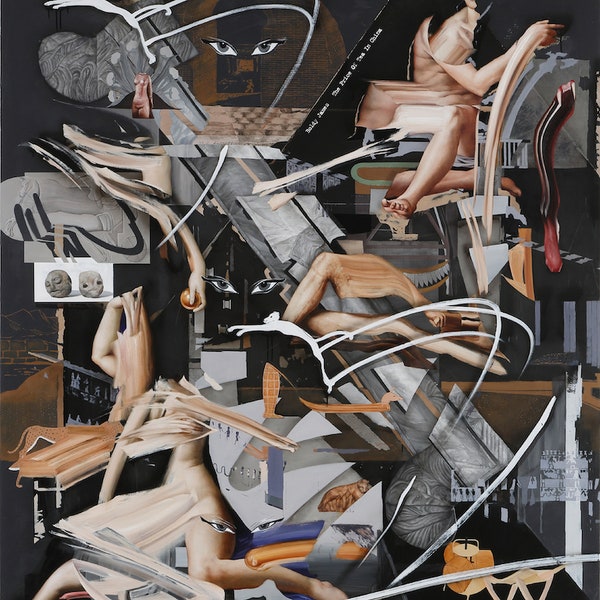
Boldy James shares the eighth track on The Price of Tea in China with Freddie Gibbs, who is arguably the most technically skilled rapper currently working. James’ verse on the track is a latticework of multisyllabic and internal rhymes with subtle nods to his stylistic forebears and opaque metaphors befitting a storyteller from another century. He carries a distinct rhyme scheme through his entire verse. James does all of this while sounding utterly relaxed. Gibbs’ verse that follows is, by comparison, pretty good.
The album is produced front to back by Alchemist, the erstwhile Mobb Deep producer who in the last decade remade himself as an indie rap kingmaker. Some of his highlights on The Price of Tea in China are
- a ruminative and soulful opener that gives the album its voice as much as any of James’ deadpan but heart-rending parables (“Carruth”)
- a purring string section from an Italian library record that Alchemist retrofits into an immaculate loop (“Pinto”)
- a masterclass in the atmospheric no-drums production of recent vintage (“Grey October”)
- a sparse kick and snare beat that Alchemist blasts with a ghostly five note fanfare every few bars (“Speed Demon Freestyle”).
Conservative rap audiences lionize albums with one rapper and one producer as the genre’s platonic ideal — cohesive and consistent in style and voice. In theory, albums like these are the work of auteurs, unspoiled by the meddling of A&Rs. Boldy James and Alchemist give this format its most effective demonstration in years. They are masters of their form, giving dense, technically adept rapping and sample-based production an exhibition worthy of the classics.
But the dazzling technique on display shrinks in stature next to the bleakness that James can wring out of a few lines. In his dry monotone, he hints at episodes of spectacular violence using the smallest details (“See the bricks chipped from the ricochet”). Guntalk, a favorite pastime of street rappers, finds chilling new expression in James’ hands: “Pitchin’ drums outside was my 9 to 5 / AR wake a sleeping giant up and chop him down to size.” Conversely, Manger on McNichols, his second album of 2020, sees James as a son of Detroit, telling his story in painfully earnest terms, like the tangle of family, destitution, and murder on “Requiem.”
In the video for “Speed Demon Freestyle,” Alchemist billows smoke and avoids the camera. James raps with his hands folded and barely moves, offering threats to would-be enemies, but occasionally indulging in a boast about Hellcats or rare Polo gear. Peerless in their execution, Boldy James and Alchemist have earned the right to be smug.— EVAN NABAVIAN
6. Lil Baby – My Turn Deluxe [Quality Control Music]
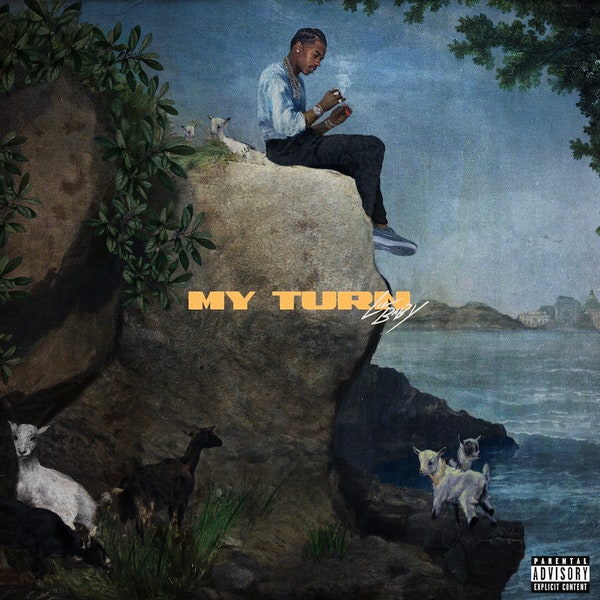
My Turn’s drums make me feel claustrophobically present in whatever room I’m in; Lil Baby’s flat affect cut by little, lilted melodic touches makes me feel disassociated from it. Of course I wish I’d been able to scream that breathless stretch in “Emotionally Scarred” with strangers downtown or at some rented house I could never find my way back to. But My Turn is not exactly that––it’s more like falling deep into oxygen debt at the gym, or timing your drug ingestion so wrong that you end up alone in a hotel bath by midnight.
It came out right on the cusp of everything crumbling. It was what I talked about the last night I went to a bar; that bar doesn’t exist anymore. I must have mumbled “businessman / went and got me an office” a dozen times in the two weeks I actually worked in an office. I quite literally forget about whole sections of this thing I’ve played on near-endless loop (there’s a DJ Paul song, and one where he barks from the back of an SUV, “you ain’t driving Miss Daisy”) the same way I forget whether something happened in July or two years ago. Even its structural weaknesses add to the fugue-state feeling that enhances its stronger parts: see, for example, the way the “Grace” hook is structured like a prayer––something you repeat––and that song’s whole architecture is repeated on the Uzi duet “Commercial.”
Baby is not an extraordinary writer, but he is a confident one. His refusal to frame his rapid ascent as a story of exceptional triumph or as a reproducible blueprint is curiously admirable. Instead, it’s a magic trick; instead, the people who work at the bank meet him in the foyer and call him his government name, smiling and coat-checking his Rolls Royce umbrella. Few songs come to true climaxes, and many of the vocals sound as if they were merely demoed––which make the moments of total control, like the hypnotic see-saw he locks into on “Low Down,” all the more surprising, and the idiosyncracies––the parties at James Harden’s house, 42 Dugg’s whistle beckoning a scoundrel to a duel at high noon––genuinely strange, not my-A&R-is-happy strange.
The most exuberant moment on the album (or more specifically: on its oddly essential deluxe edition) comes when he buys floor seats to a Knicks game that disinterests him simply so he can be photographed with his “chains in layers.” Even when he’s matching Future’s mania or conceding to the shimmering beats Young Thug has preferred since So Much Fun, Baby is just a little out of reach. — PAUL THOMPSON
5. SAULT – Untitled (Black Is) [Forever Living Originals]
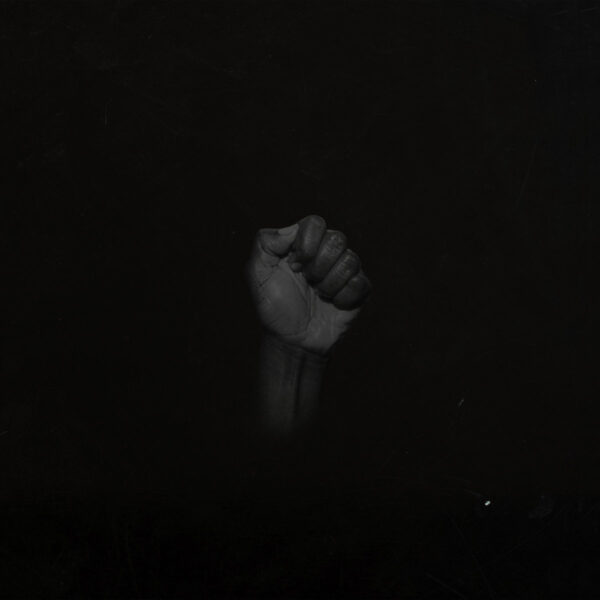
In the global movements to recognize the value and beauty in Blackness, oppose police brutality and create new structures of understanding, certain themes have transcended language. Dehumanization, anonymity, and a collective power in reclamation of dignity have been present in these movements across the globe from #Iftheygunnedmedown and Obama saying Michael Brown could have been his son, to Egyptians fomenting revolution in the early 2010s with chants of “Kuluna Khaled Saeed” (translation: We Are All Khaled Saeed, the 26-year-old librarian whose murder at the hands of police represented to many the start of the Arab Spring’s revolutions). It’s fitting thus that one of music’s most staunch voices for Black liberation is the largely nameless and faceless collective, SAULT. There are only a few tidbits of information about the UK-based electro-afro-funk group, including an artist credit on one of their albums to the creator of a children’s charity, and a morsel that all proceeds from the album would be going to “charitable funds.”
The group’s origins and identities may seem blurry, but their music is clear-eyed and direct in its celebration of Blackness in all its forms, unfolding the beauty in its identities, royalty and timelessness with sensory experiences. On the album, Untitled (Black Is), which was released on Juneteenth, the marching beats quake the earth beneath you like you’re on the frontlines, and even the non-religious among us feel the chills of ancient spirits coursing through the bass and drum lines that make up the veins of the album. The rage, the toughened interior and irony-coated protection, and a sense of royal salvation are all on full display through hymnal chants, fiery dance grooves, and sermons on the rituals that connect us through space and time. There’s very few albums that you can say this about non-sarcastically or without sounding like an asshole, but Untitled (Black Is), along with the successive Untitled (Rise) are meant to be felt rather than just heard. — HARLEY GEFFNER
4. Serengeti – AJAI [Cohn Corporation]
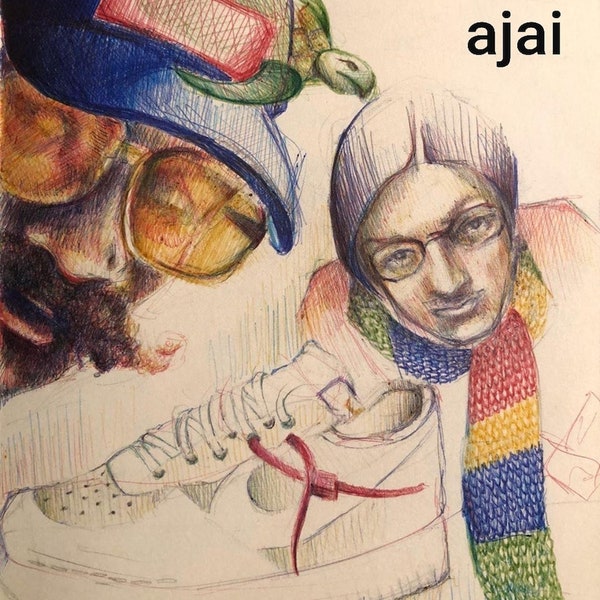
Nothing this year wrestled with the ~zeitgeist~ quite like Ajai, Serengeti’s ingenious hypebeast allegory. An immersive, jittery character study, Ajai evokes a designer-clad hellscape of downwardly mobile young men risking it all for Balenciaga drops. The fact of precariously-employed adults camping out for merch and coveting clothes they’ll never wear is, of course, its own punchline—so Ajai delves deeper, documenting ripple effects via a cast of supporting characters.
Ajai’s neuroses are self-destructive, but what’s more painful is the ways they undermine his friends and associates. His apologetic wife watches in horror as he dons five figures worth of streetwear for a softball game, unable to swing the bat or carry a conversation. She begs him not to wear a flashy suit to her medical conference. Who do you think you are? Can’t you just be normal for a few hours, for my sake? He can’t, but it’s not the clothes’ fault. Submerged culture-war currents run beneath Ajai’s comedy. On “Summary,” Ajai regales the neighborhood kids with secondhand street lore; their immigrant father, wary of Ajai turning his children into wannabe hoodlums, attacks him.
If high fashion is meant to distinguish the leisure class from the rest of us, Ajai’s obsession is proof of his social ineptitude: if you wear Off-White to the grocery store, you look like a certified freak. But what is sub-culture if not conscientious separation from the general populace? Ajai’s acquaintances don’t appreciate his exceptionalism, the lengths he goes to dress the way he does. And it drives them nuts! “You look fine, Ajai!” his wife yells as he agonizes over his “fit,” making them late for a flight.
The paradox at the heart of streetwear culture is that streetwear is supposed to evoke effortless, affluent cool, yet hypebeasts are the most desperate, insecure try-hards around. (You can’t be cool if you’re trying so hard!) Still, the scariest thing about Ajai’s characters is how basically normal they are. Ajai has relationships and a job of some sort; he’s mostly functional, except in the ways he’s not. There’s contrarianism in Ajai’s methods, a sort of anti-Griselda, what-if-we’re-wrong logic exercise. But it’s the strongest entry yet in Serengeti’s canon of ordinary psychopaths. — PETE TOSIELLO
3. Freddie Gibbs & The Alchemist – Alfredo [ESGN / ALC/ EMPIRE]
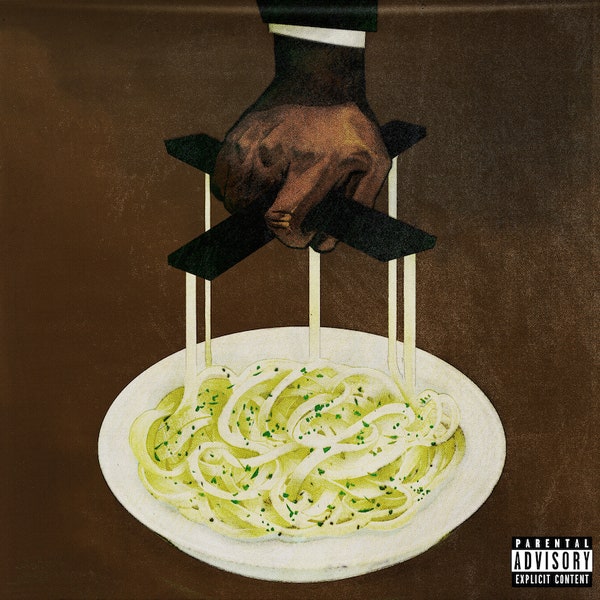
Greatness is only fleeting when you stop challenging yourself. The truth is, there are always paths to fly higher or burrow deeper, to better define the things you can do as an artist. As a friend often reminds me, all we do is part of a body of work. Take Freddie Gibbs and the Alchemist, for instance, two artists talented out of the gate who grew into, respectively, the ace MC of his generation and a producer undisputedly on the all-time greats list.
Alongside the other career centerpiece work Alchemist delivered this year with Boldy on The Price of Tea in China, Alfredo is a masterpiece delivered by a Michelin-star chef in this rap shit. The blooming guitar of “Something to Rap About” floats alongside the blurry bounce of “Baby $hit” and the sinister piano thumper “God is Perfect.” “Scottie Beam” is appropriately lush enough to have a Rick Ross feature. The widescreen musicality contained in Alchemist’s beats of recent memory hits its apex on Alfredo.
Freddie Gibbs has long served a reputation of being one of rap’s gifted writers and orators. Pick an era: when Gibbs was signed to Jeezy or when he was ripping Jeezy a new asshole over some Madlib beats. On “Frank Lucas,” he summons the thunder of Alchemist’s beat to refer to a time where he declined an advance check from CTE because he was still shipping packs. Gibbs’ writing is as deep as ever, and not just when he’s rapping about trauma and IRS payment plans. He’s found a new way of saying as much as possible. Without sacrificing the dexterity of his flow or the musicality of rhyming sounds.
And the rapping is god level. Gibbs just lobs thunderbolts to every beat brought in front of him. He hits a cadence over the atmospheric and soulful “Look at Me” that would get you first chair on drums in concert band. He pounds fists into the cinder block heavy drums of “All Glass,” rapping about how your nephew has knots of money in his church socks. As many of us, his bars here are obsessed with The Last Dance; Isaiah Thomas frowning at an iPad over not being included in the Dream Team, Scottie Pippen cramming a dunk on Patrick Ewing and telling Spike Lee to sit his ass down. Gibbs already rhymed about Dennis Rodman kicking the cameraman four years ago.
Over the mournful jazz guitar which guides “Skinny Suge,” Gibbs solemnly catalogues his failures and setbacks; waking up from PTSD dreams; the politics and unspoken agreements of the drug trade, along with the line between business and personal. The final four bars tell a more compelling, complete narrative than some rappers try in five minutes. Alchemist’s productive last couple years has yielded some of his best-ever work, inspiring Gibbs to tap into his inner Michael Jordan and sociopathically dominate the discourse on who the best rapper is. — DOUGLAS MARTIN
2. Thundercat – It Is What It Is [Brainfeeder]

Thundercat is a brilliant synthesist, a bassist of unparalleled talent fluent in so many musical styles that he’s developed a unique language. With each album, he finds new ways to take jazz fusion à la Jaco Pastorius and fuse it with strains of P-Funk, L.A.-bred electronic music, R&B, and anime scores. He’s also a romantic and a contemplative introvert. When he isn’t seeking, losing, or in the throes of love, he’s questioning his place in the universe. If he breaks from either, he’s usually celebrating his friends, sending up the profound platonic connections that shore him up at his lowest points. For all of the above, play It Is What It Is, Thundercat’s fourth album and perhaps career-defining album.
It Is What It Is opens with a question: “Is anybody out there?” (“Lost in Space / Great Scott”). Every subsequent song either seeks connection, celebrates the realization of it, or laments its impossibility. “Interstellar Love,” where Thundercat determines to find love before his body decays, gives way to “I Love You Louis Cole,” which is a breakneck bromance that plays like an anime intro. “Funny Thing,” a rubbery and bouncy slice of funk that borders on disco, is about partying with another friend. Like the best Thundercat songs, it succeeds because of the earnestness and simplicity of the songwriting. On “Dragonball Durag,” Thundercat balances absurdity and whimsy with romance. He’s covered in cat hair but smells great, rocking a Dragonball Z du-rag and ready to make love while wearing his chains. Of course, Thundercat doesn’t eschew the depressing. He laments the loss of a potential lover on the slowly thumping ballad of “Unrequited Love.”
The core of the album, though, comes on “Fair Chance.” Throughout, Thundercat has been searching for anyone and anything to distract from the fact that he lost Mac Miller, who he memorializes with help from two of Miller’s other friends, Ty Dolla $ign and Lil B. It’s the aural equivalent of ripples on a pond, poignant strumming backed by aqueous atmospherics and soft drums. He flips a Michael Jackson lyric (“So hard to get over it / I’ve tried to get under it”) before driving home the album title: “It is what it is.” These words are Thundercat’s response to love, loss, and everything in between, his version of Vonnegut’s, “So it goes.” It’s not exactly profound, but it hits because of the power of Thundecat’s instrumentation and the profundity of his honesty everywhere else. – MAX BELL
1. Drakeo the Ruler x JoogSZN – Thank You For Using GTL [Self-Released]
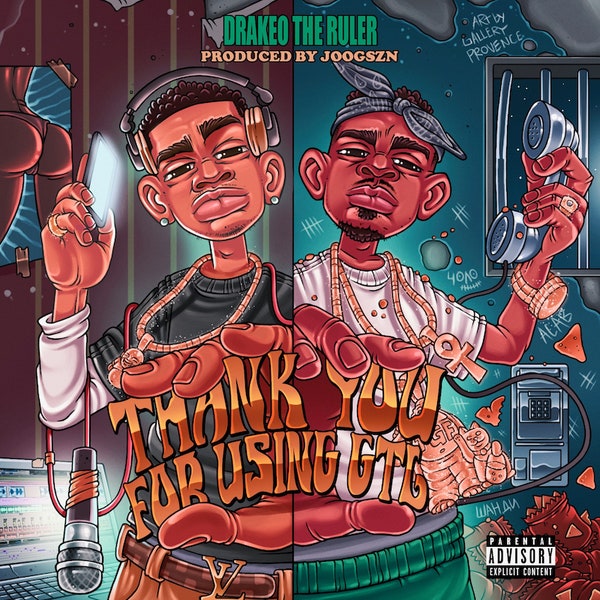
The jury pool was impaneled and ready for selection. They were old too. Dangerous territory for a case that hinged on a nuanced understanding of social media, L.A. gangsta’ rap, and street lingo. Then the pandemic struck, abruptly forcing the postponement of Drakeo’s second trial. Covid had already begun its relentless sweep through the dungeons of MCJ, sickening and even killing inmates. The next month, a coalition of criminal justice groups filed a lawsuit in federal court alleging that the Sheriff’s Department failed to adequately protect the prisoners. With the Board of Supervisors insisting on culling the overcrowded population, Drakeo and his attorney John Hamasaki motioned for bail.
The fear and invisible threat of death had become omnipresent, but the Los Angeles District Attorney and the Sheriff’s Department redoubled their vengeance. In response to the defense’s petition, they alleged that the South Central rapper was the most clear and present menace to the community since Tookie. The previous summer’s results — in which a jury acquitted him of a battery of murder and attempted murder charges — was a disgrace. A laughable farce. The original jurors were naïve rubes who failed to realize that Drakeo was the shot caller mastermind of the 2GreedyFamily, one of the most violent and reckless criminal street gangs in the city. A flight risk, who for all we know could wind up in Mexico or maybe Cuba, smoking Montecristo’s with ‘Pac in military fatigues.
In a ludicrous perversion of the truth worthy of Sarah Sanders, the D.A. insisted that a gag order was imperative. His silence was an absolute necessity. The media had been allowed to spread their fake news for too long, and Drakeo’s Twitter account was far too active. The judge happily agreed. No bail, not under any circumstances. Mr. Get Dough’s face belonged on a post office wall, not Instagram. Even if he beat the case, she vowed to give him six years for his lone conviction: getting caught with a handgun on a trip to buy cigs. If you asked me at the time whether Drakeo would ever see the light of day, I couldn’t have given you a straight answer. His innocence was never in question, but it was clear that the D.A. and law enforcement would marshal the full power of the state to ensure the destruction of him and everyone he knew.
What came next seemed ordained for a biopic. Flouting the gag order, Drakeo recorded an album in a frenetic 36-hour binge, spitting his vocals from a phone in solitary confinement, at the height of the pandemic, facing potential life imprisonment. In June, as protests erupted in all corners of the city, he released Thank You for Using GTL, a sly, brilliant missive against this deranged form of modern lynching. A testament to first amendment rights and the importance of recognizing rap as a hyper-imaginative branch of Black high art. A nervous rap masterpiece capturing peak Maestro’s tension (even if was closed). A carceral opus about the high stakes fight for his life, but also one about shooting people, brazenly clowning his imitators (roughly 75 percent of new L.A. rap), and shopping at Neiman-Marcus, bankruptcy be damned. Lest you forget that it’s being recorded from County, a robotic message from the predatory phone service GTL constantly drones the album’s title, functioning like the world’s most malignant producer tag.
Thank You for Using GTL is not only the best album ever recorded from behind bars, it’s one of the year’s best albums. It’s like if Rubin Carter didn’t need Bob Dylan to write “Hurricane” for him, and instead synthesized the spirit of a rapper born a few months before Ice Cube dropped “Check Yo’ Self.” His producer on Thank You for Using GTL, JoogSZN, summons a psychedelic astral minimalism reminiscent of vintage Timbaland. But rather than use the cosmos to project negative space, he relies on the unyielding infinity of pitch-black asphalt. The engineer, frequent Young Thug and Migos collaborator Navin Upamaka, sandblasts the mix of jailhouse static and distortion, while Drakeo’s voice scrapes counterclockwise against the beats, giving it a natural chopped-and-screwed crawl. The coda of the finale, “Fictional,” breaks the fourth wall and speaks directly to his legal oppressors, who have warped his lyrics and slang for their purposes:
If I say something in a rap, it’s not real
My mind is… I have a lot of imagination
It’s fictional
So I don’t want my words misinterpreted or any of that misconstrued
If you’re gonna use my music against me, I expect you use it the same way you would…Country music, punk rock, metal
Jazz, whatever
Blues, whatever
Treat rap the same way that you’re gonna treat any other genre
You’re not gonna hold Denzel Washington accountable for his role in Training Day.
If we remember this year, it will be principally for the plague and the civil rights uprising in the spring, the most substantial protest in at least a quarter century. This album is inextricable from those things: recorded in a Tower of London under the most intense form of lockdown known to man, a cold-blooded sneer against the degradations of a system designed to destroy. It is a savage warning and a weary attack, written from the bottom but unwilling to bow down. He wasn’t even legally allowed to say “Free Drakeo,” and he devoted an entire album directly to the context. A “Fuck You” for the ages.
My objectivity is inextricable from what I witnessed. This was recorded from the darkest space in the human psyche, and its reception changed everything. A prosecution that counted on suppressing word about the case, suddenly had to contend with articles in the Washington Post, Pitchfork, The Atlantic, and the New Yorker. The broader campaign and publicity against Jackie Lacey helped usher in George Gascon’s victory, which seemed so unlikely in the spring. The morning after the new D.A’s election, the prosecution cut Drakeo a deal, a shock considering their previously militant opposition. In the new administration, the bogus gang conspiracy charge that Drakeo was being retried on, essentially no longer even exists.
It’ll never be entirely clear how much this album changed Drakeo’s fate, but my best guess is that it was the turning point. A blend of brilliance and auspicious timing, a semi-miracle that fulfilled its only goal: to help get him free. It might not be the greatest Drakeo album, but it’s hard to imagine that anything could have ever been more important. And just when it seems to get too heavy, there are eulogies for luxury department stores and reminders of the futility of social media. Drakeo’s been home now for almost two months; he bought a Rolls-Royce on Christmas. The detectives must be so mad. It might sound fictional, but it’s real. – JEFF WEISS

